Audi has released a new wireless charging case that works in conjunction with its optional Audi Phone Box connection and charging system.
Audi
Audi confirms Q2 pricing and spec
The VW Group aims to clean up its act
The Volkswagen Group has confirmed future wide-scale use of particulate filters for all its petrol engines.
Audi confirms SQ7 TDI pricing
Technology, News, Hatchback, Saloon, Coupe
New Audi models to come with permanently installed SIM card
Convertible, Coupe, Motorshow, News, Sports Car
Audi unveils all-new TT RS Roadster and Coupé
Audi reveals all-new R8 Spyder in London
Audi facelifts A6 and A7 Sportback
The Audi A6 and A7 Sportback ranges have received styling tweaks and equipment upgrades as part of a mild facelift.
Audi builds one-off six-metre, six-seater A8
Audi reveals SQ7
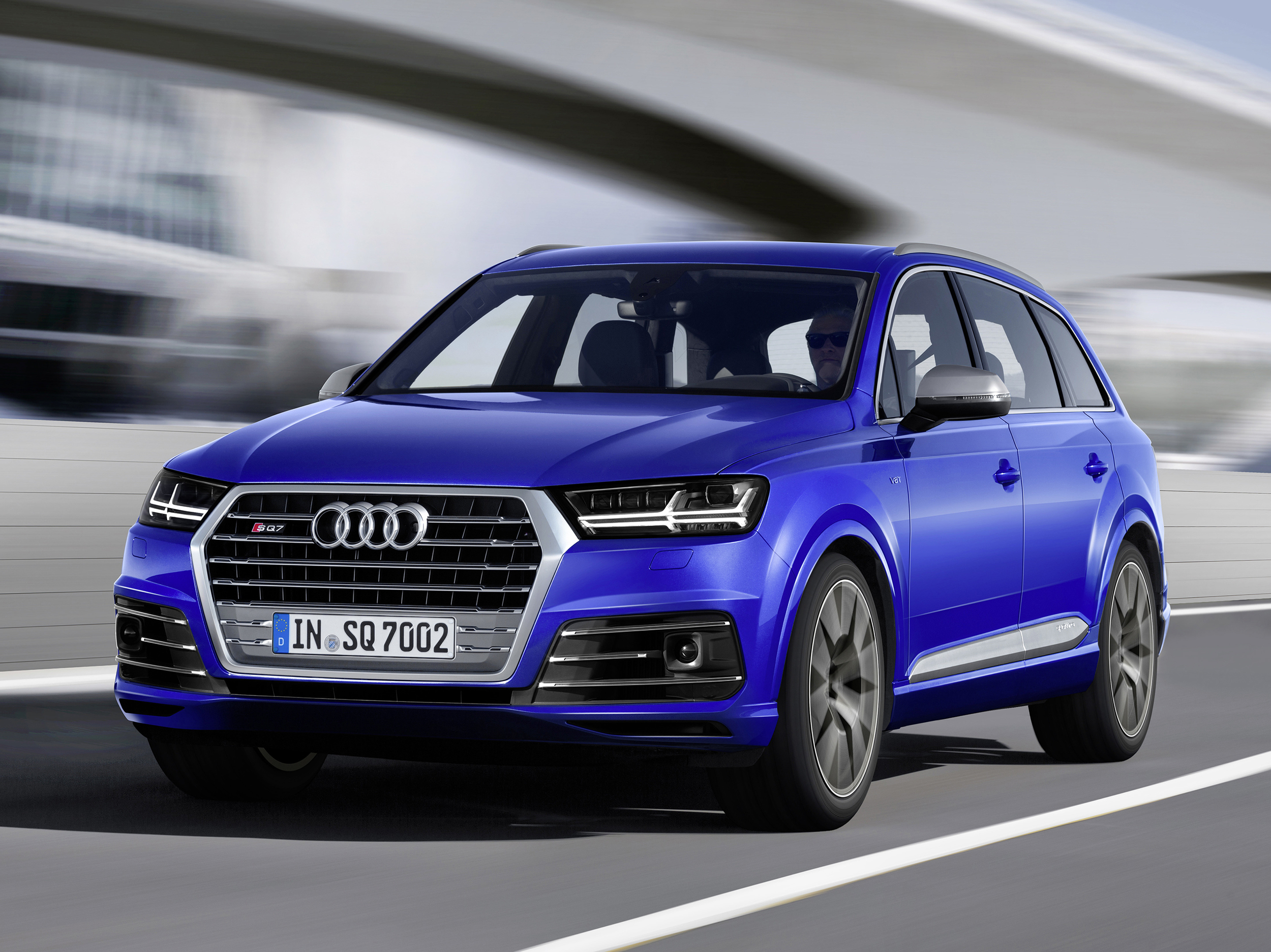
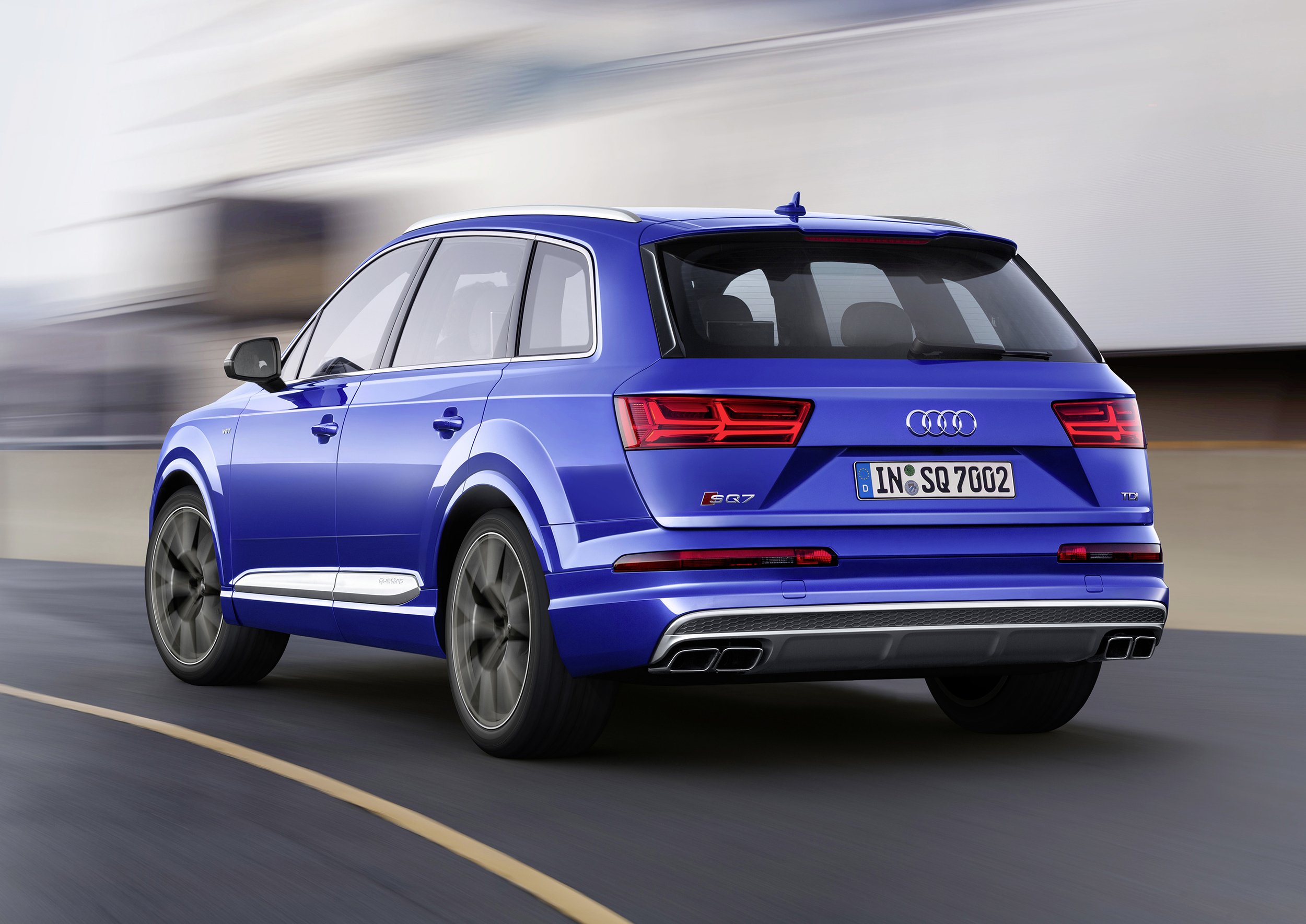
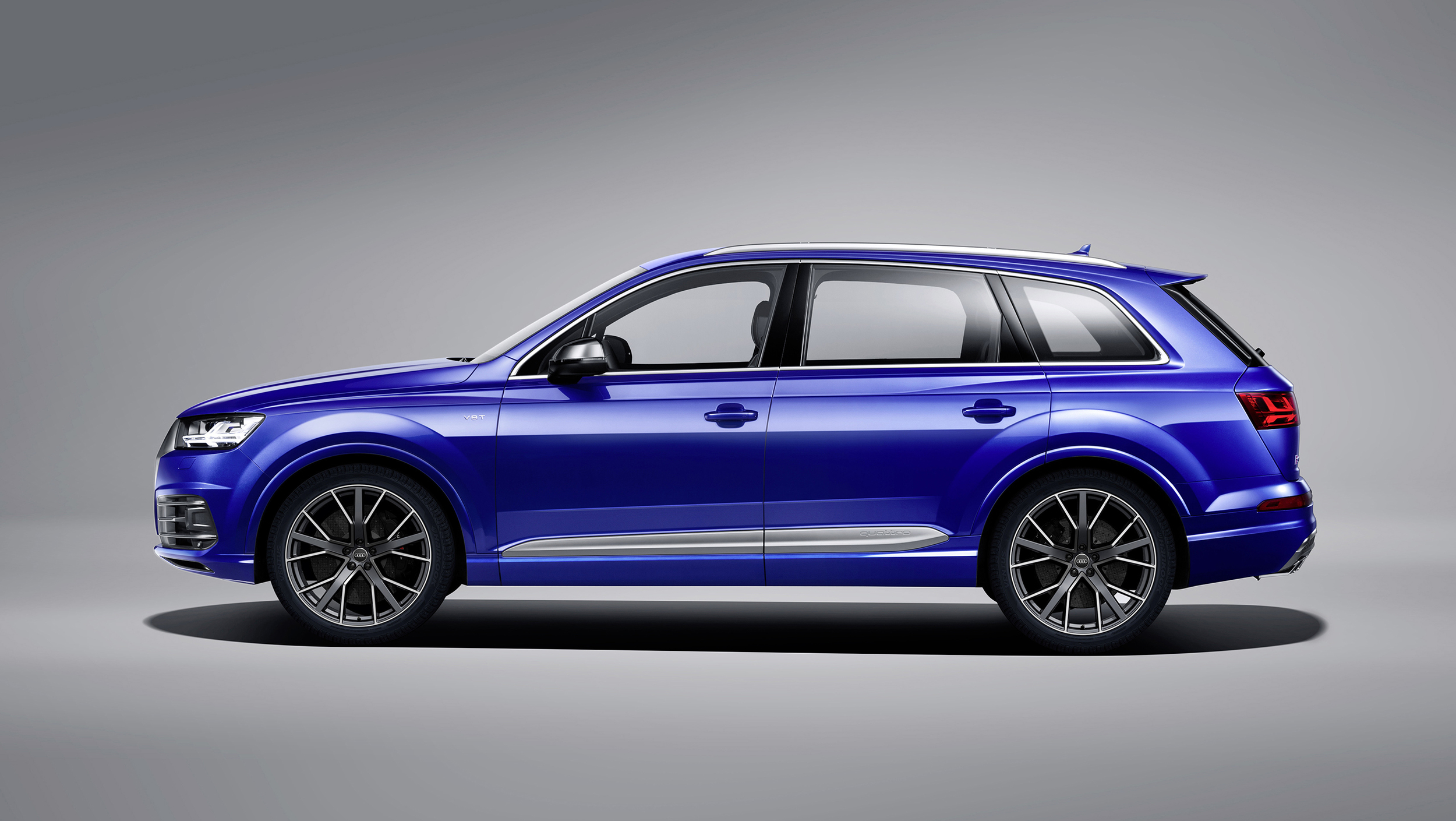
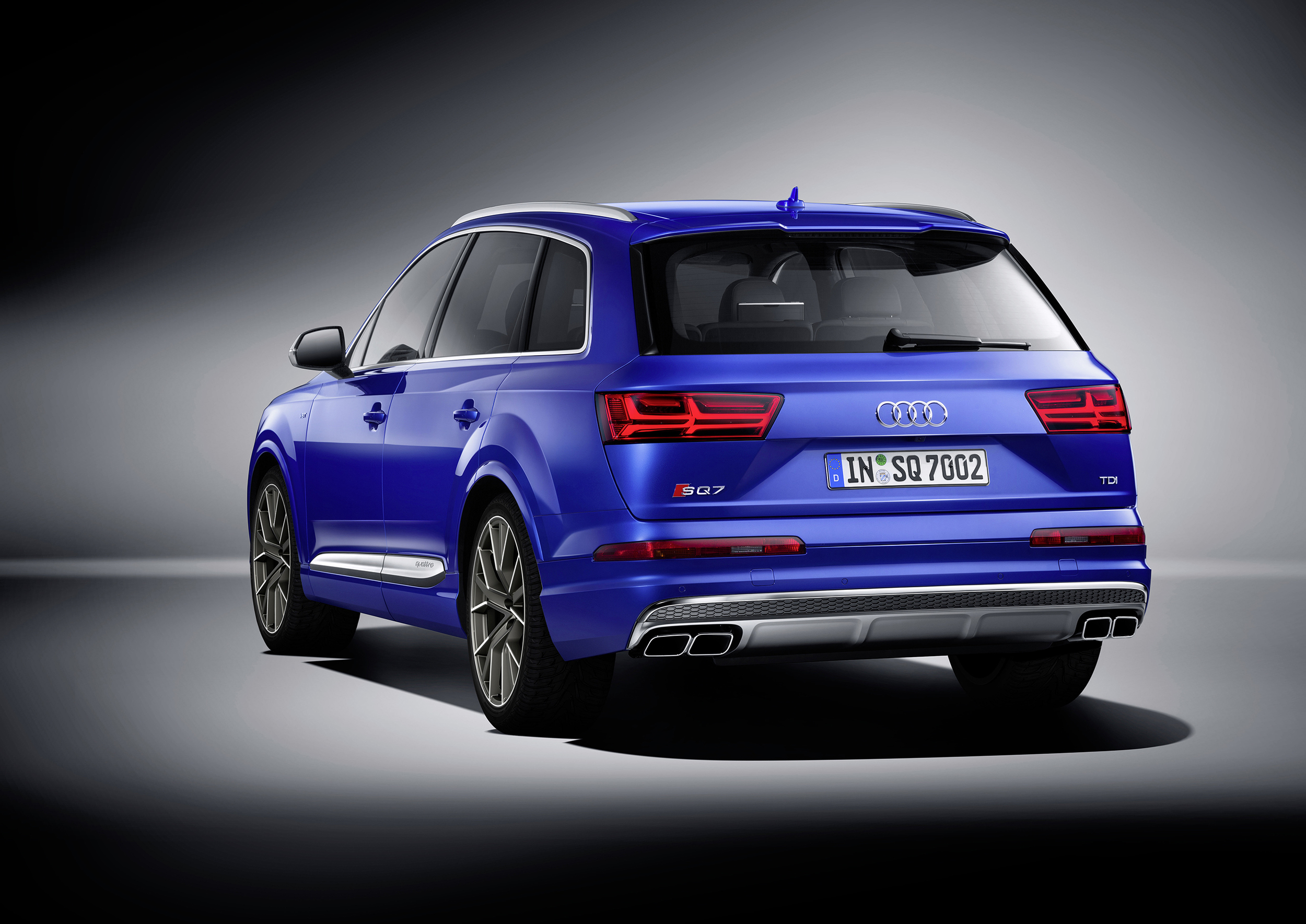
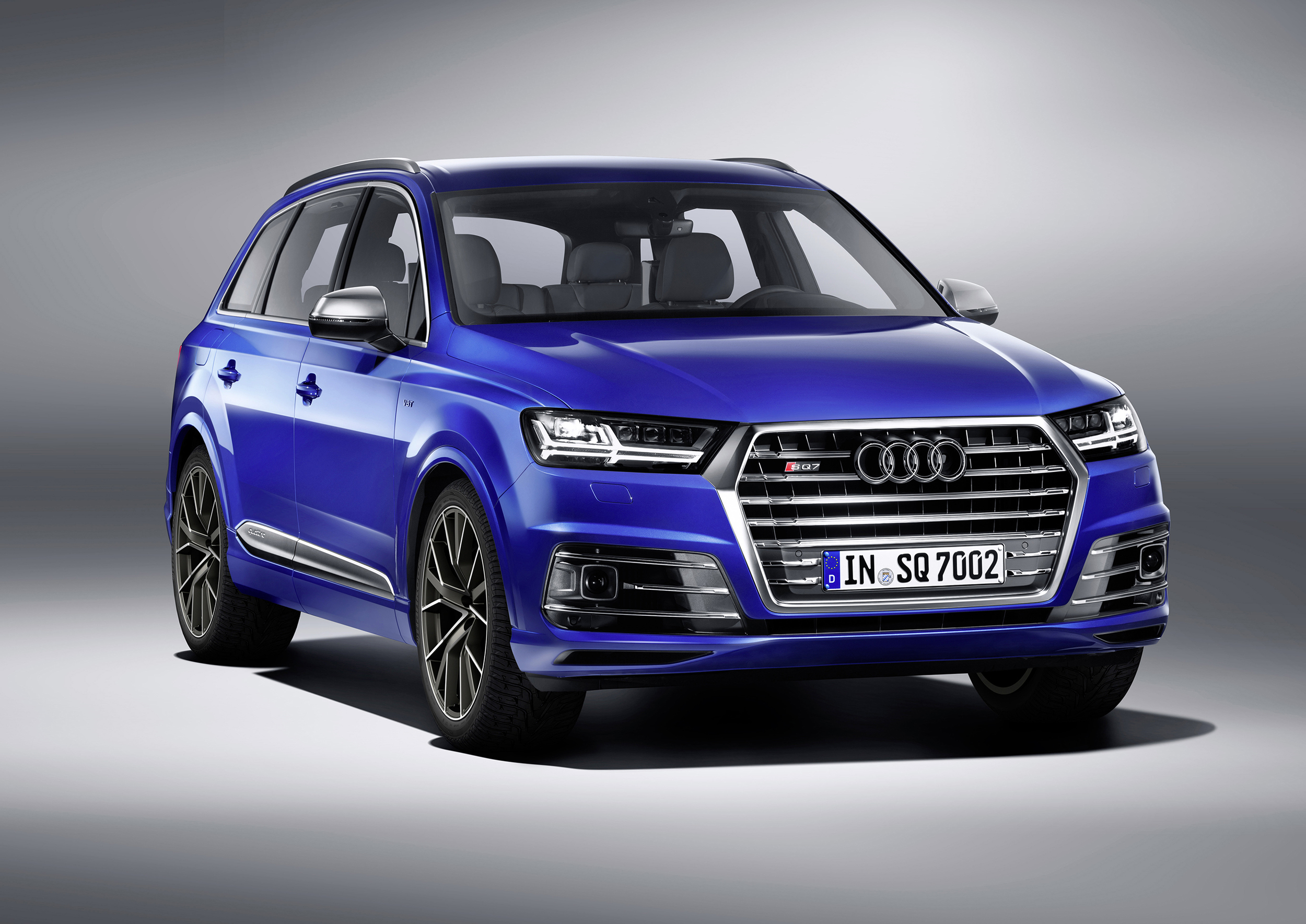
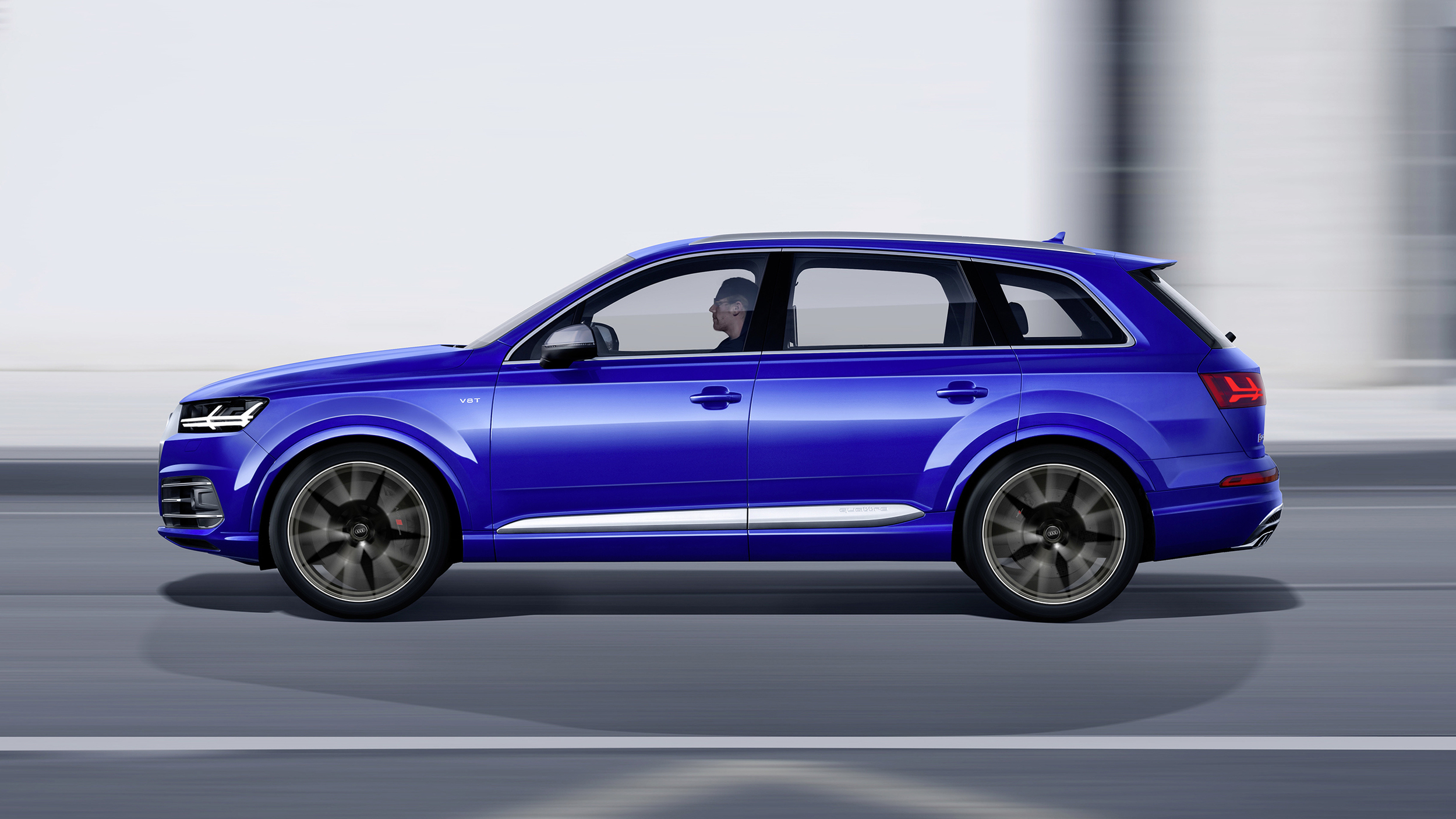
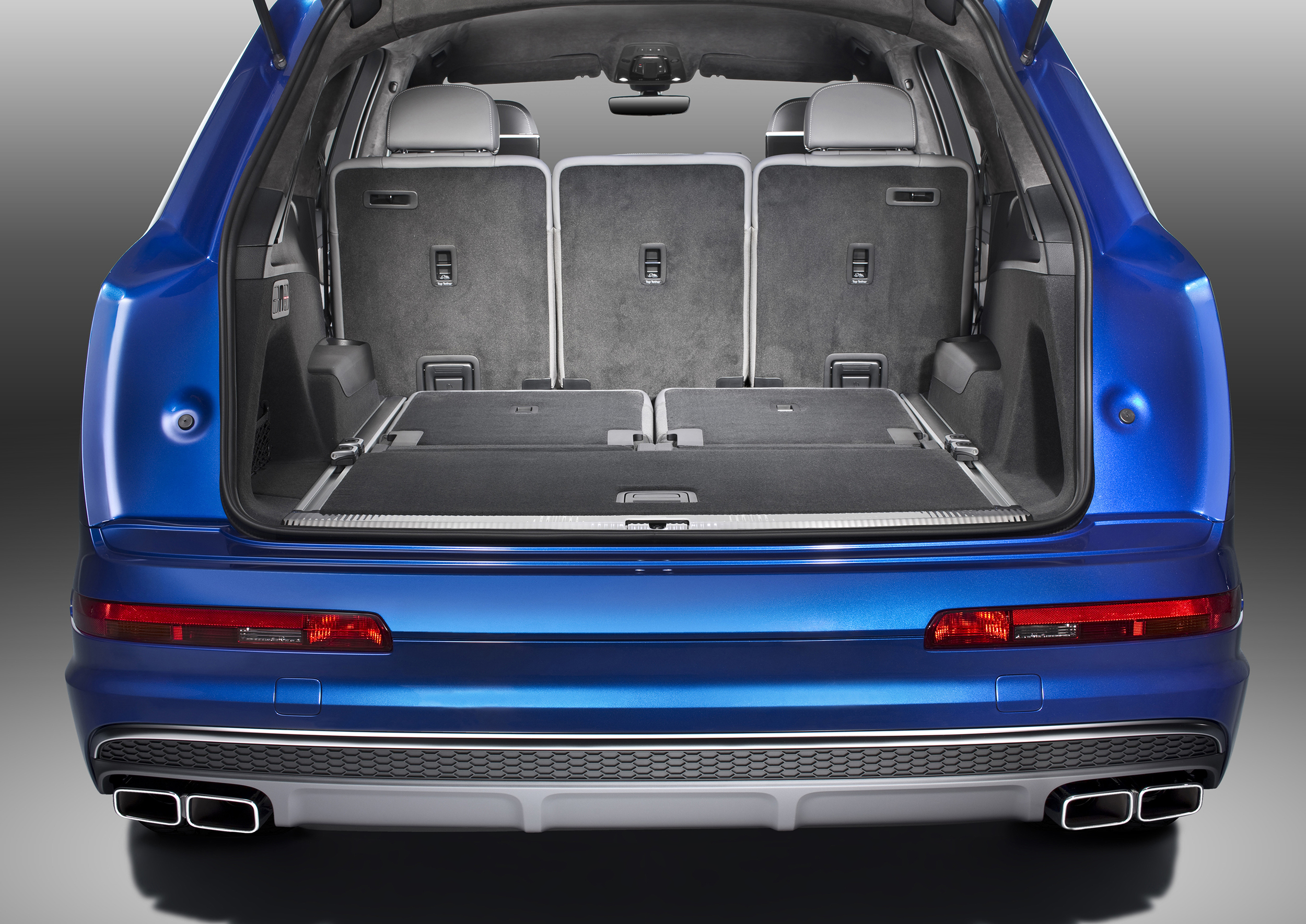
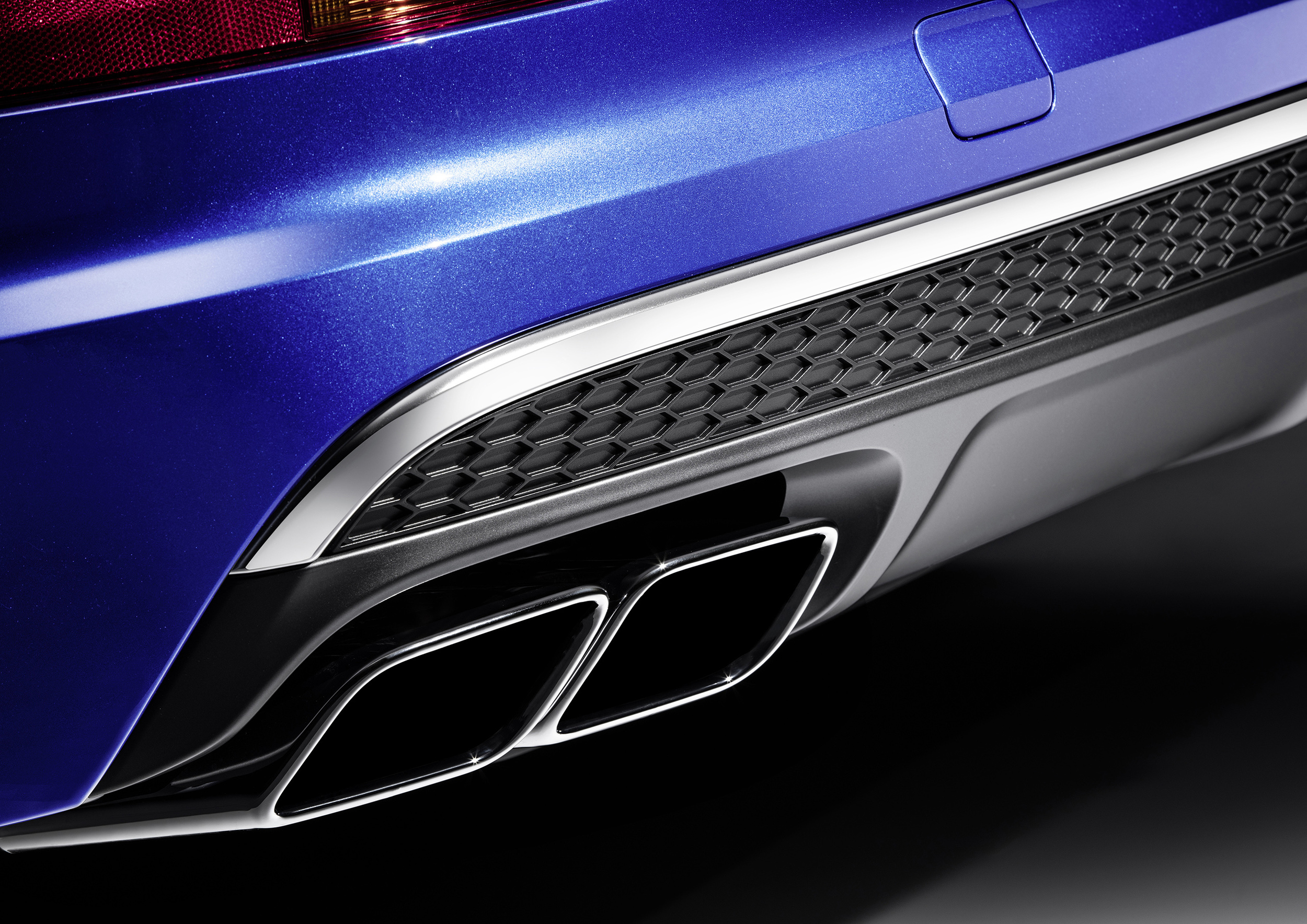
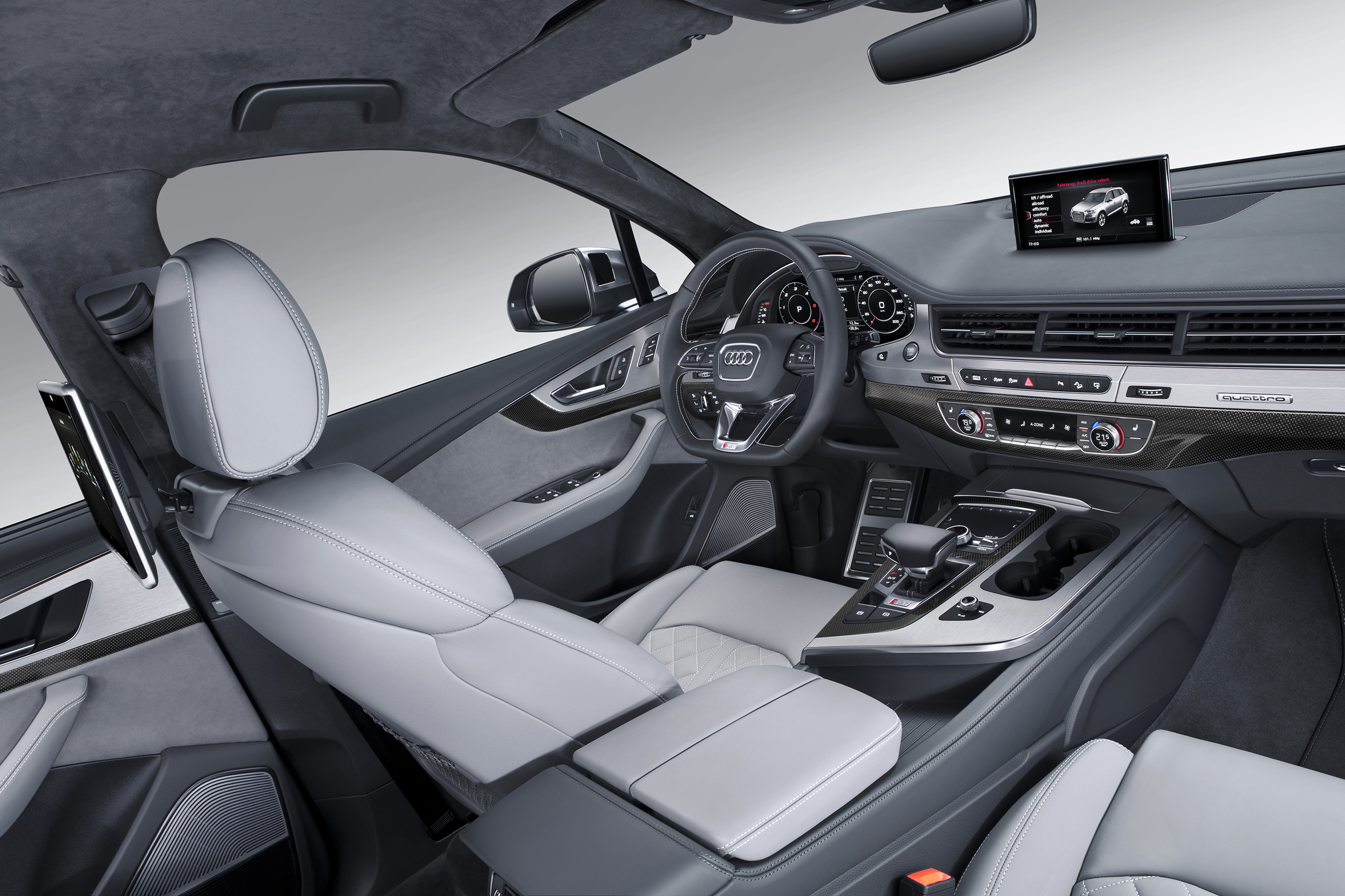
Audi has unveiled the first S model to join its Q range with the 435PS SQ7 TDI.
Described by Audi as the world’s first series production car combining turbocharging with an electrically powered compressor, the new model ‘consigning turbo lag to history’.
The SQ7 TDI also features electromechanical active roll stabilisation for ‘significantly’ reduced body roll. Powered by a redesigned V8 BiTDI engine that now develops 435 PS and 900 Nm (663.8 lb-ft) of torque, the electrically powered compressor (EPC) is placed in the air path downstream of the intercooler, close to the engine. Because the EPC does not require any exhaust-gas energy to develop boost, it can be used at any time, thus making it the solution for the traditional weaknesses of the classic exhaust-gas turbocharger, dispensing with any sign of turbo lag. The 0-62 sprint takes just 4.8 seconds while top speed is limited to 155mph. In the New European Driving Cycle (NEDC), the SQ7 TDI returns up to 38.2 mpg combined. This corresponds to CO2 emissions of 194 g/km.
"Following the launch of the successful SQ5, we are now also applying the concept of a diesel-engined S model to the Q7 model line. So equipped, the SQ7 TDI with a V8 TDI engine achieves the consumption figures of a six-cylinder. The new technology solution of the electric powered compressor in the SQ7 TDI is a world first in the competitive environment, with which Audi once again underscores its claim Vorsprung durch Technik,” said Dr. Stefan Knirsch, Member of the Board of Management of AUDI AG for Technical Development.
The 4.0 TDI in the Audi SQ7 TDI in mated to a redesigned eight-speed tiptronic which changes gears quickly and efficiently, and at high speeds allows coasting at idle. A self-locking centre differential is the heart of the quattro permanent all-wheel drive system. It is described as compact, lightweight and interacts ‘very precisely’ with the suspension control system.
Electromechanical power steering, the Audi drive select driving dynamics system, Audi pre sense city, powered tailgate and adaptive air suspension with S-specific tuning are standard. Lightweight carbon fibre-ceramic discs will also become optionally available shortly after the market launch. Audi offers the SUV with 20-inch wheels on 285/45 tyres, with options up to 22 inches from quattro GmbH available soon after UK ordering opens.
Design wise, Audi DNA is clear with the sculpted Singleframe radiator grille, distinctively highlighted wheels and flared quattro-style blisters. The SQ7 TDI has a new radiator grille with an S-specific design at the bumpers and plenty of S body styling. Other distinguishing features are the side air inlets, the mirror housings and door inlays in standard aluminium. The exhaust system terminates in four rectangular tailpipes.
Passengers in the SQ7 TDI experience the largest interior in the segment, according to Audi. The second row has a three-section backrest with segments that can be folded down separately, while the final third row folds up and down electrically.
With its 12.3-inch display, the Audi virtual cockpit presents logically structured information in brilliant graphics. Driver ergonomics are excellent, and operation is intuitive. The driver chooses the display mode via the multifunction steering wheel. A head-up display is also available as an option.
The standard MMI navigation plus with MMI all-in-touch includes a large glass surface on the center tunnel console that provides the finger with haptic feedback after each click. The MMI logic allows for intuitive system operation and also understands terms from everyday speech.
Pricing has yet to be announced.
Crossover, City Car, Family Car, News
Audi Q2 debuts in Geneva
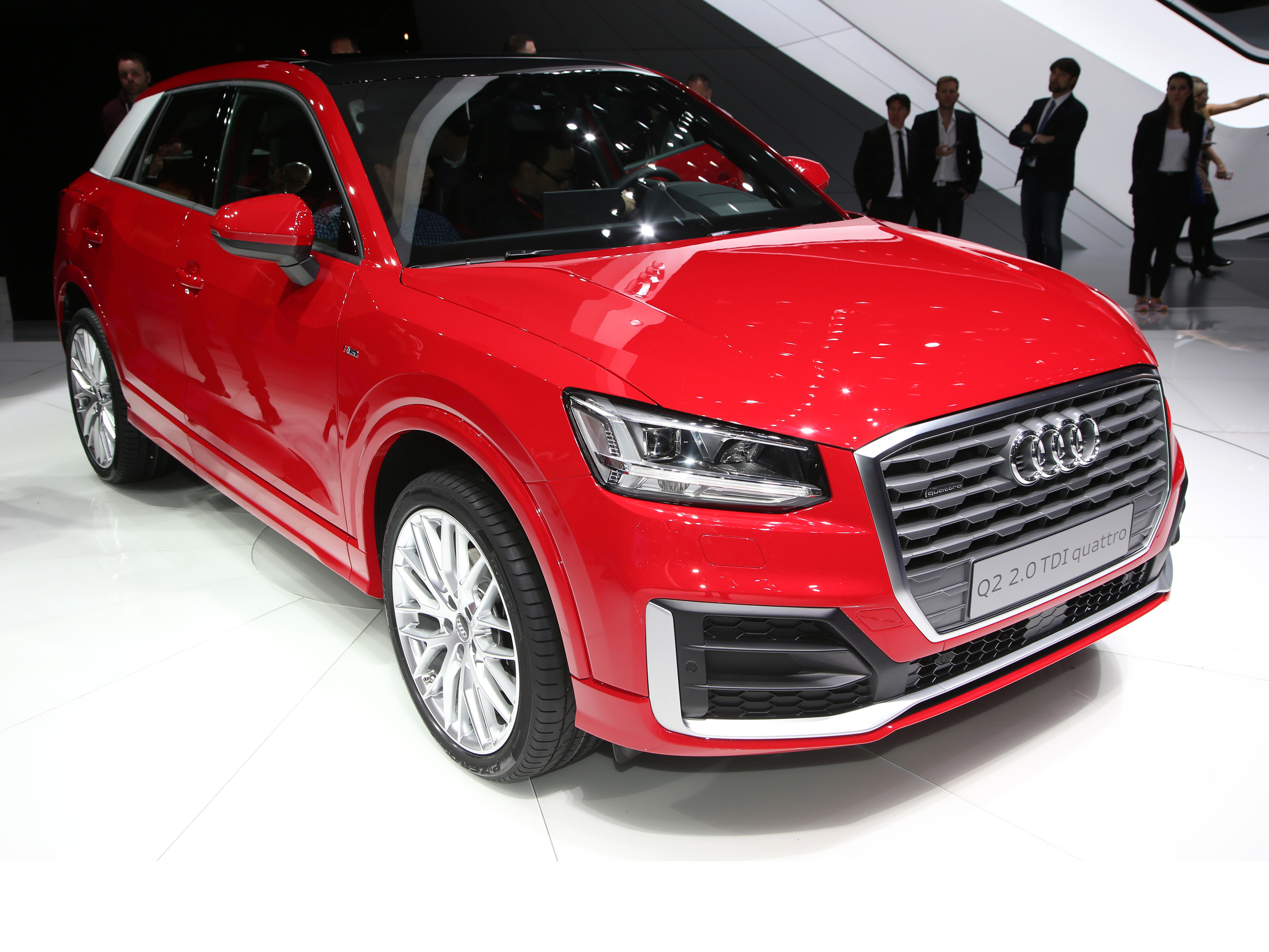
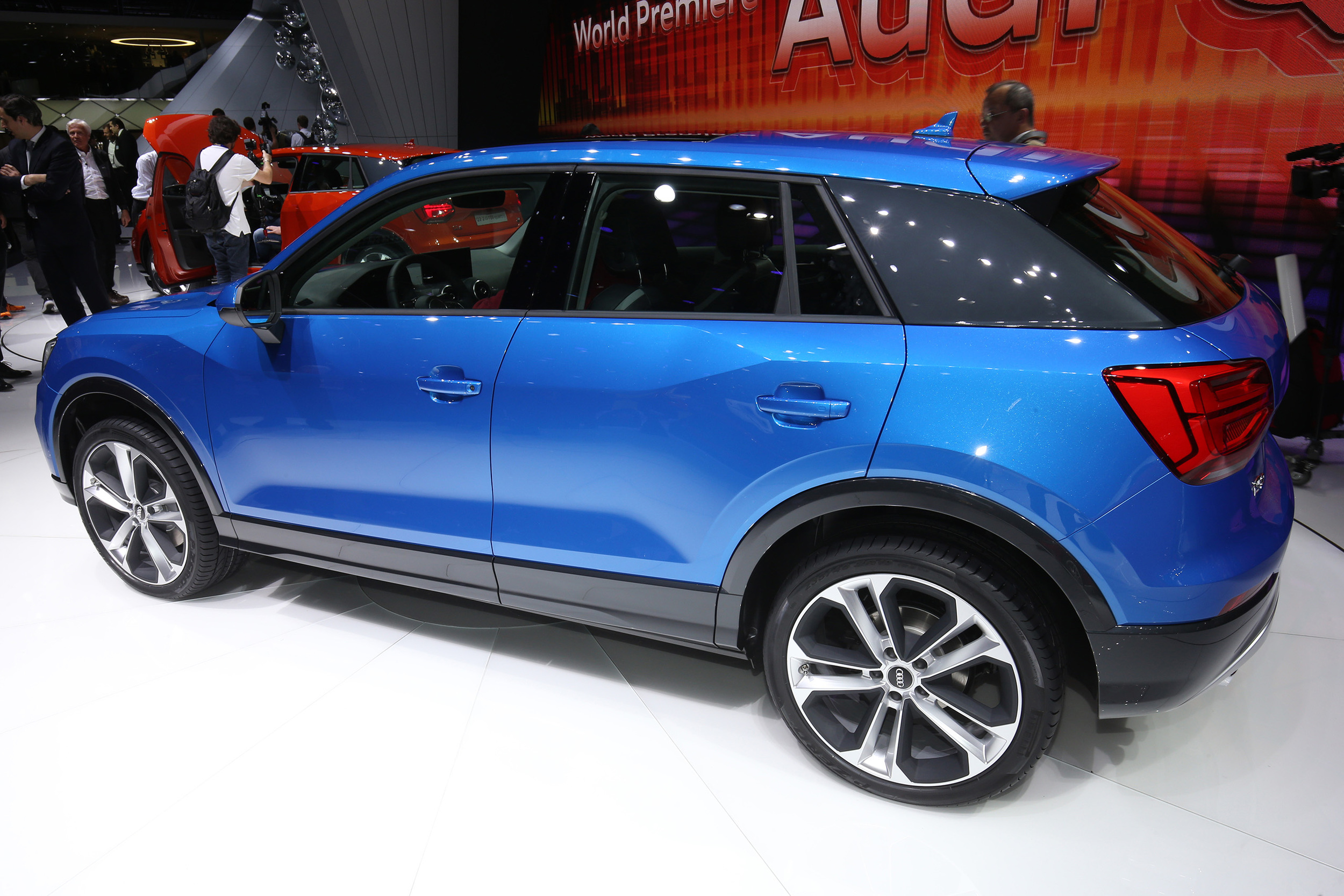
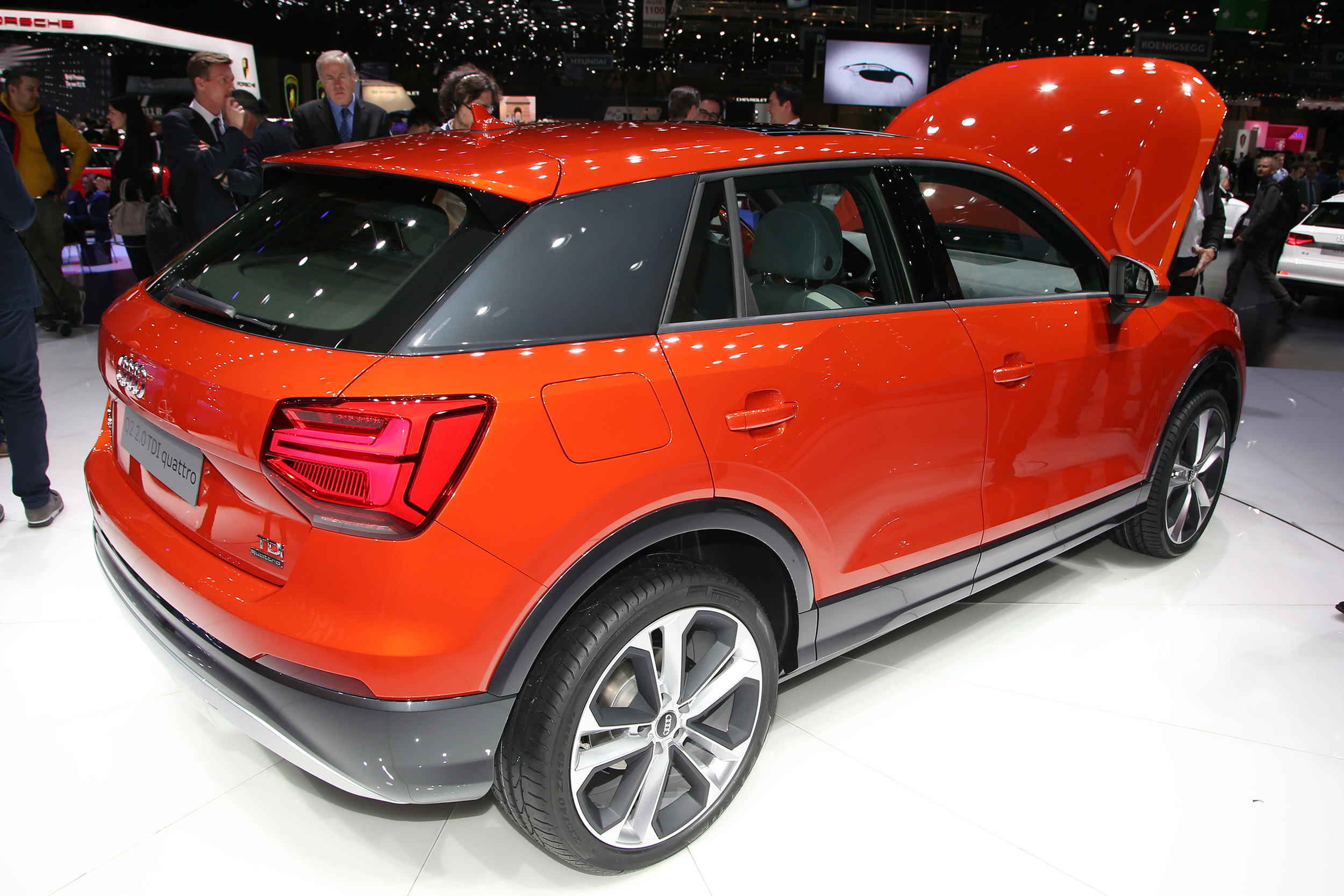
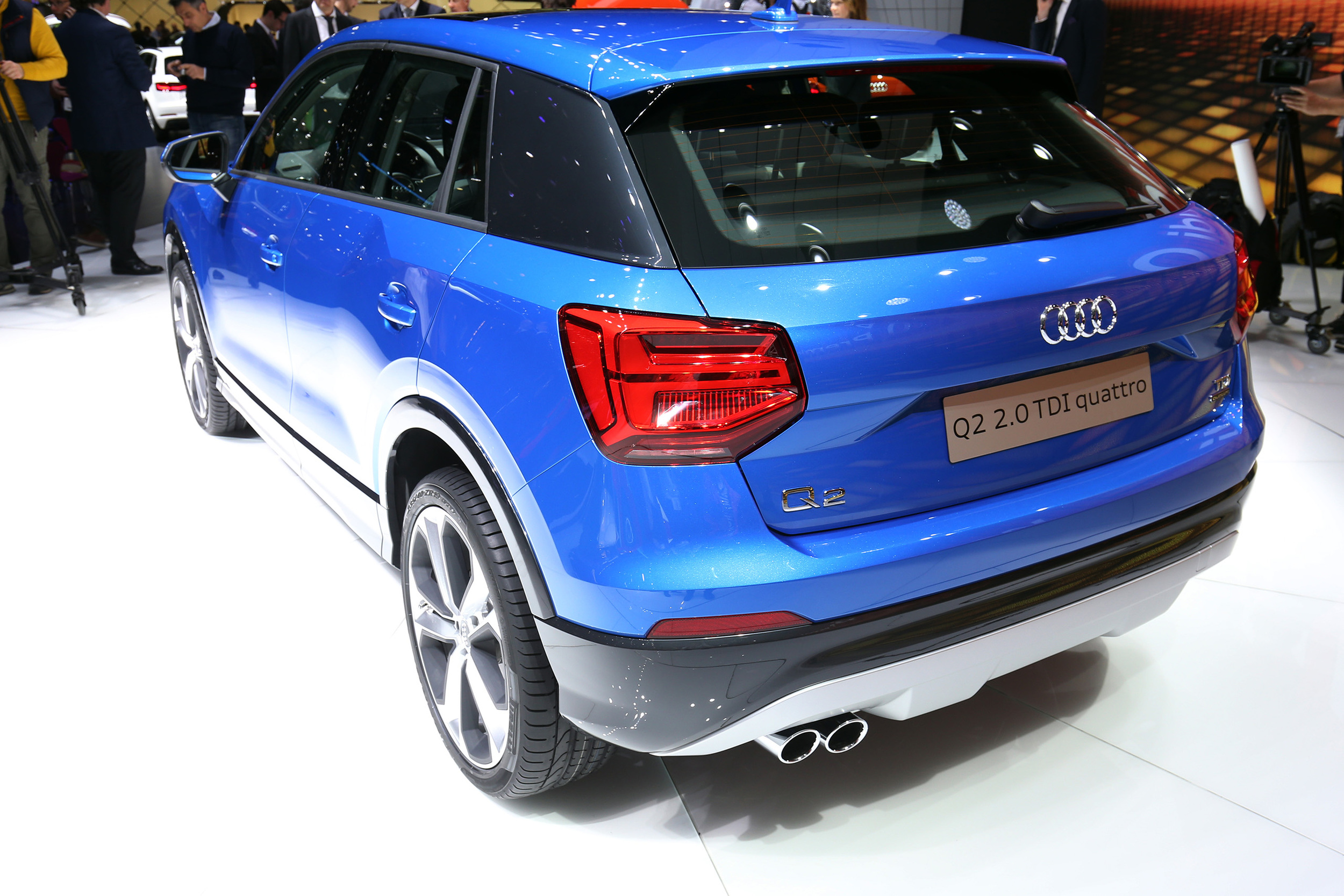
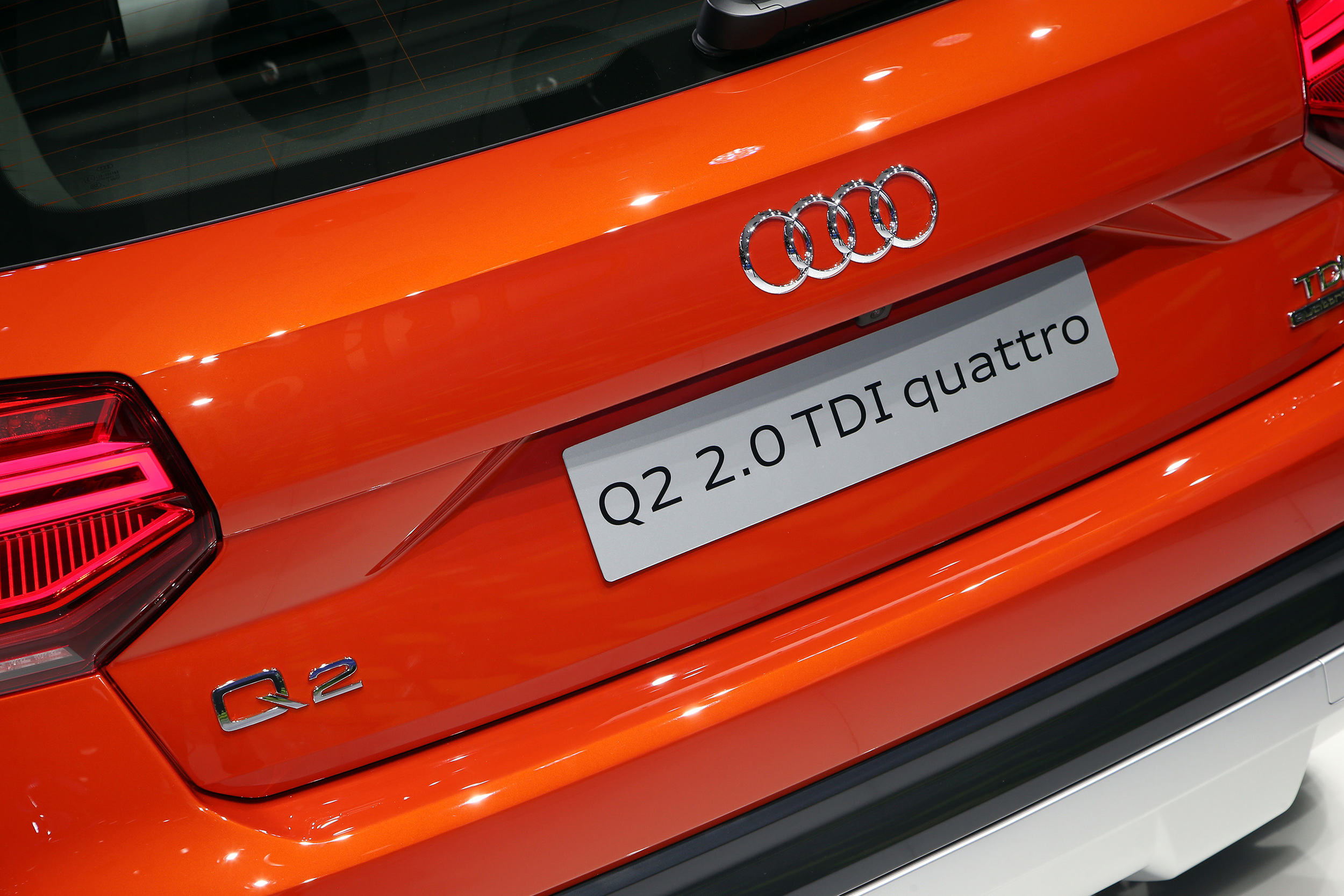
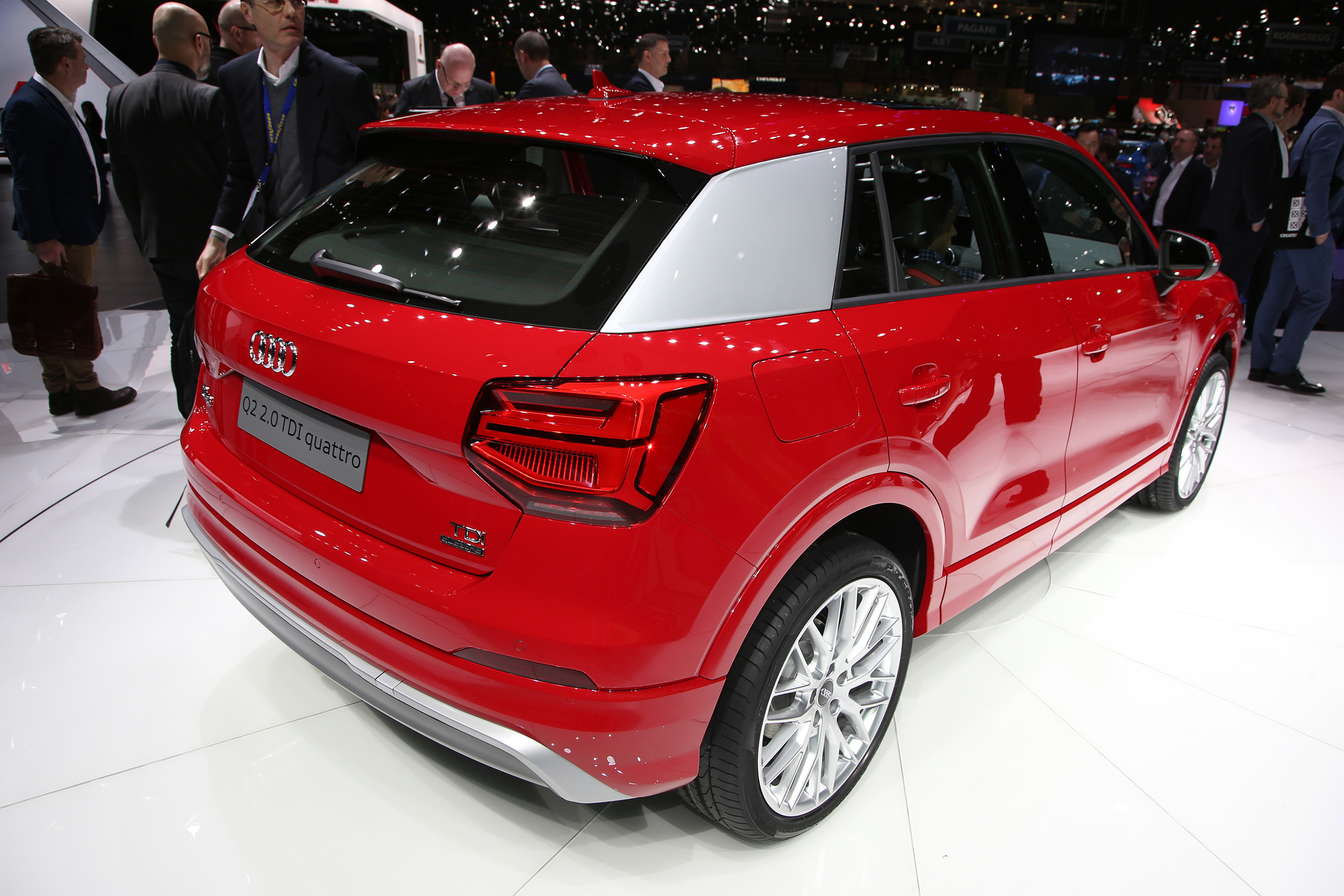
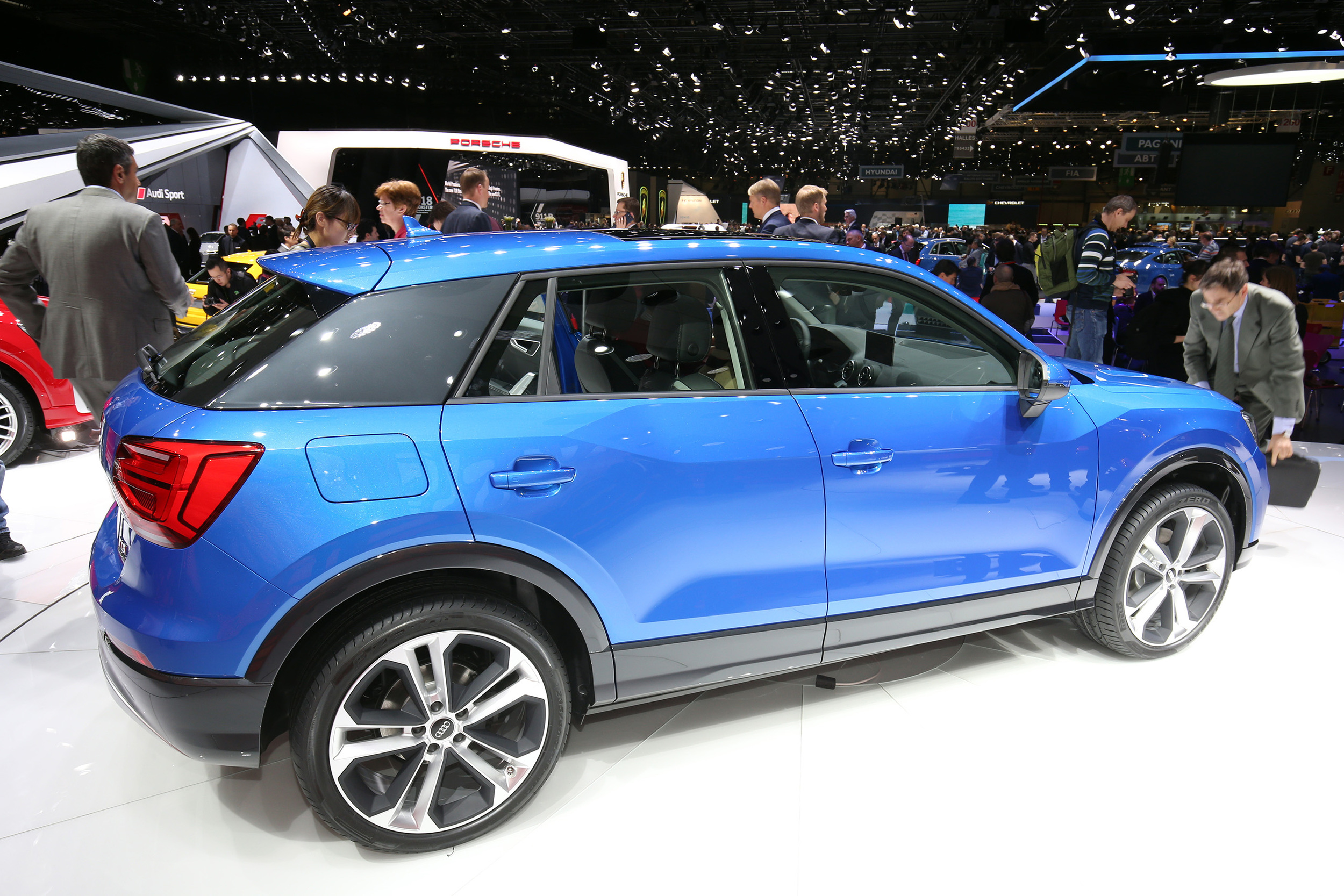
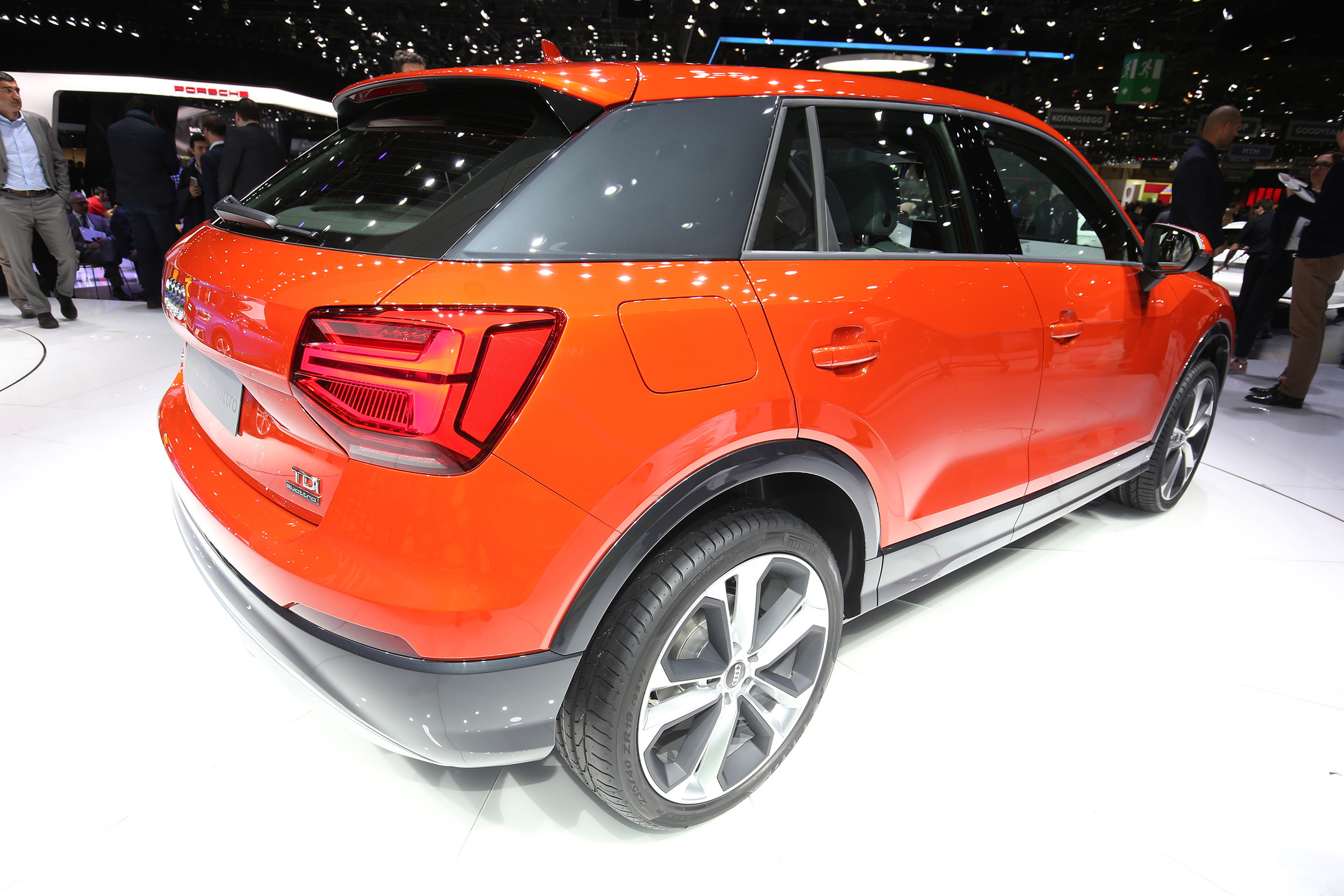
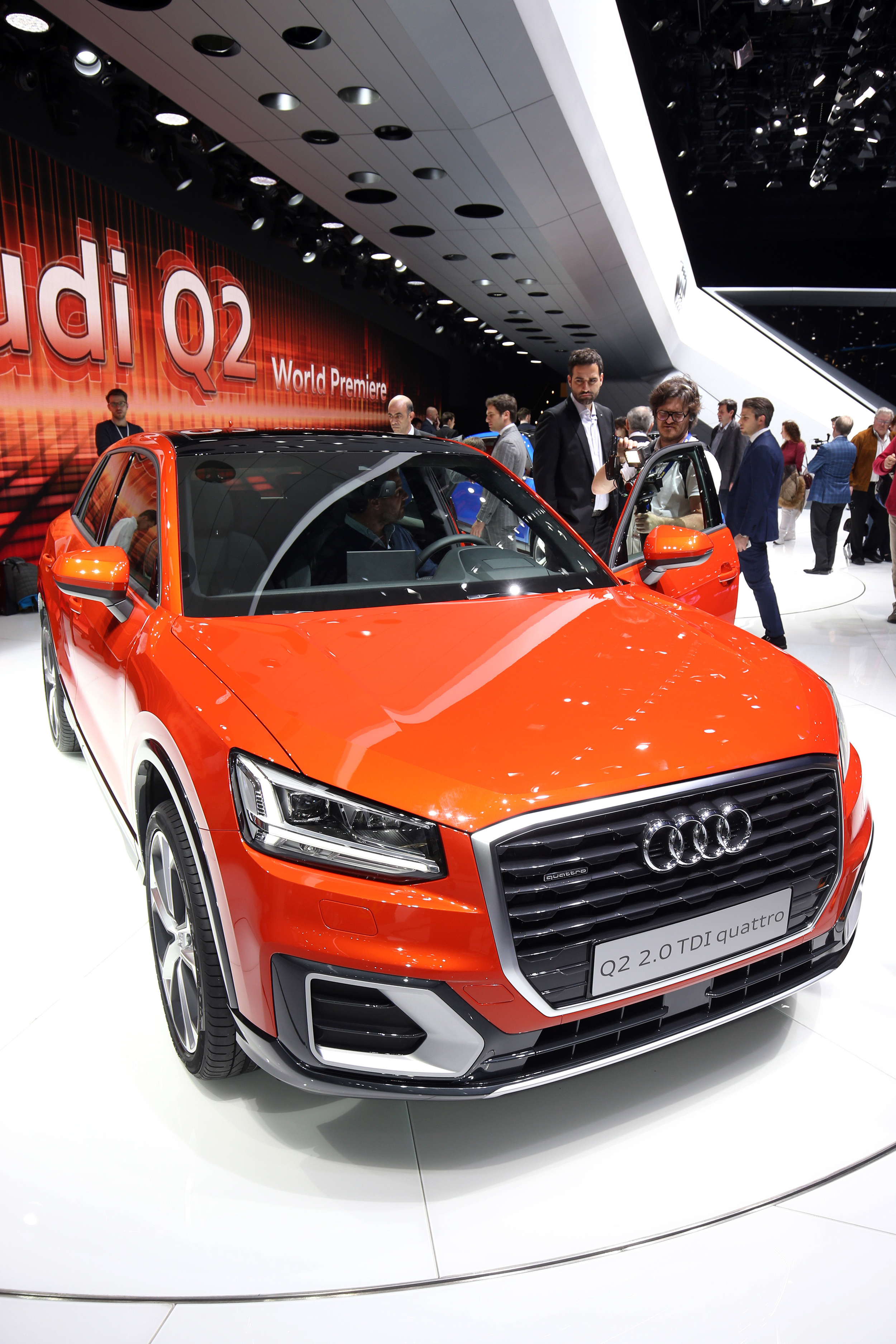
Audi has unveiled its new Q2 compact SUV in Geneva.
The German company says it has ‘taken the compact SUV in a bold new styling direction' with the Q2 designed to appeal to a younger audience. It also includes a portfolio of connectivity, infotainment and assistance systems borrowed from larger Audi models.
At the front, the high-mounted Singleframe grille in octagonal design is joined by large air inlets. A low roof descends and merges into the C-pillars with colour offset blades, while the rear body ends with a long roof spoiler and a diffuser that has an 'off-road' look.
The Q2 is launching in the UK with a choice of five engines. Along with a 1.0-litre three-cylinder TFSI, two four-cylinder petrol engines are being offered with 1.4 and 2.0 litres of displacement (2.0-litre TFSI to follow in 2017). In addition, two four-cylinder diesel engines will be available with 1.6 and 2.0 litres of displacement and outputs of 116PS and 150PS. As an alternative to the six-speed manual transmission, Audi also offers the S tronic dual clutch transmission with seven speeds for all engines. In the 2.0 TFSI, a newly developed dual-clutch transmission is used which has a new type of oil supply and reduced friction. The 150PS TDI engine can be combined with quattro permanent all-wheel drive, and the system is standard in conjunction with the 2.0 TFSI engine.
The Q2 has the high entry of an SUV with good visibility and a large luggage compartment (405 to 1,050 litres of capacity), yet Audi says the driver’s seat position is low in relation to the steering wheel as in a saloon. Optional extras include a power tailgate, an LED lighting package and a three-way split rear bench backrest with cargo through-loading, while newly designed 17-inch alloy wheels are fitted as standard, and can be optionally increased to 19 inches upon request.
Expected to open for UK orders in July, first deliveries of the new Audi Q2 are due in November 2016.
Audi A4 Avant pricing to start from 27K


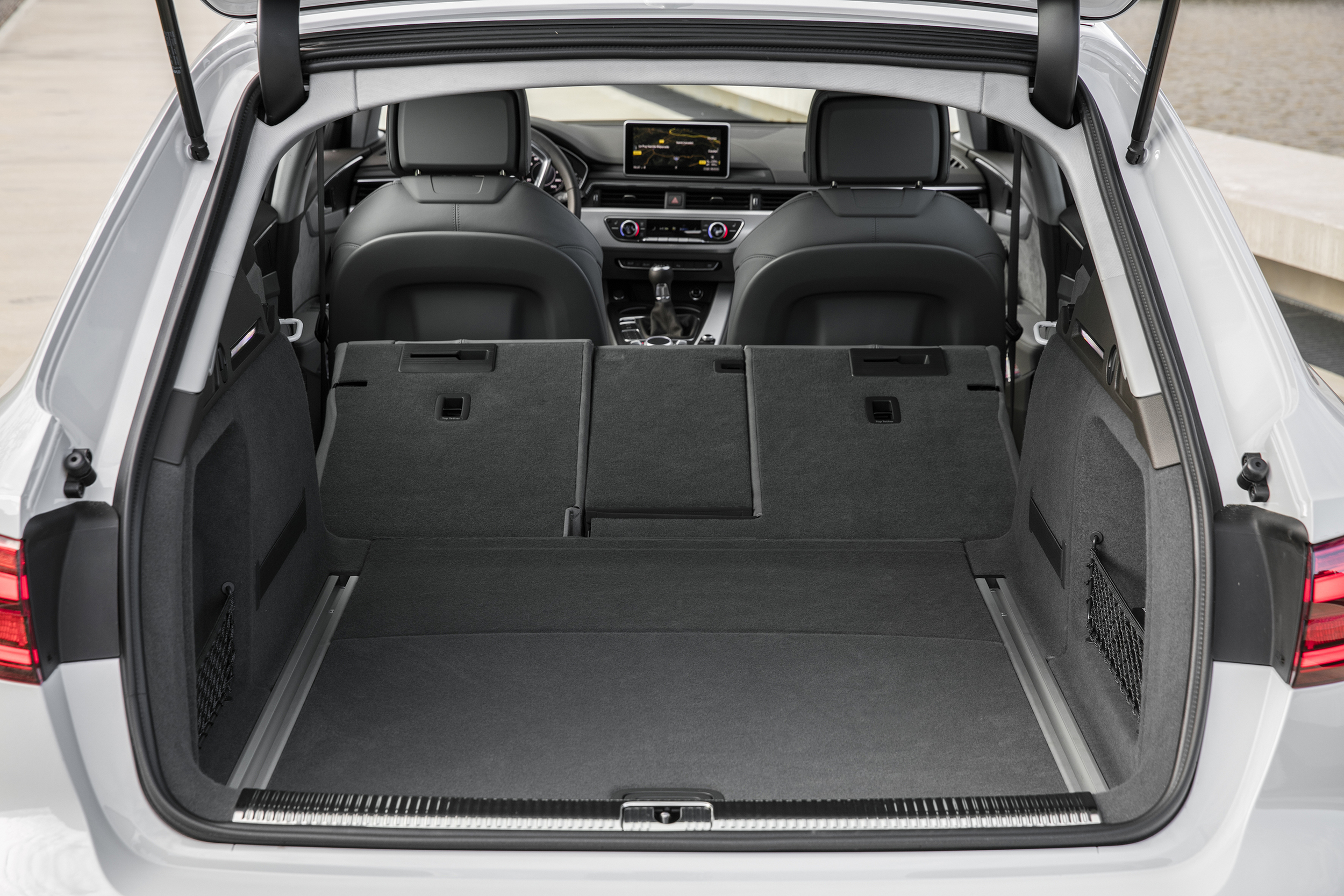
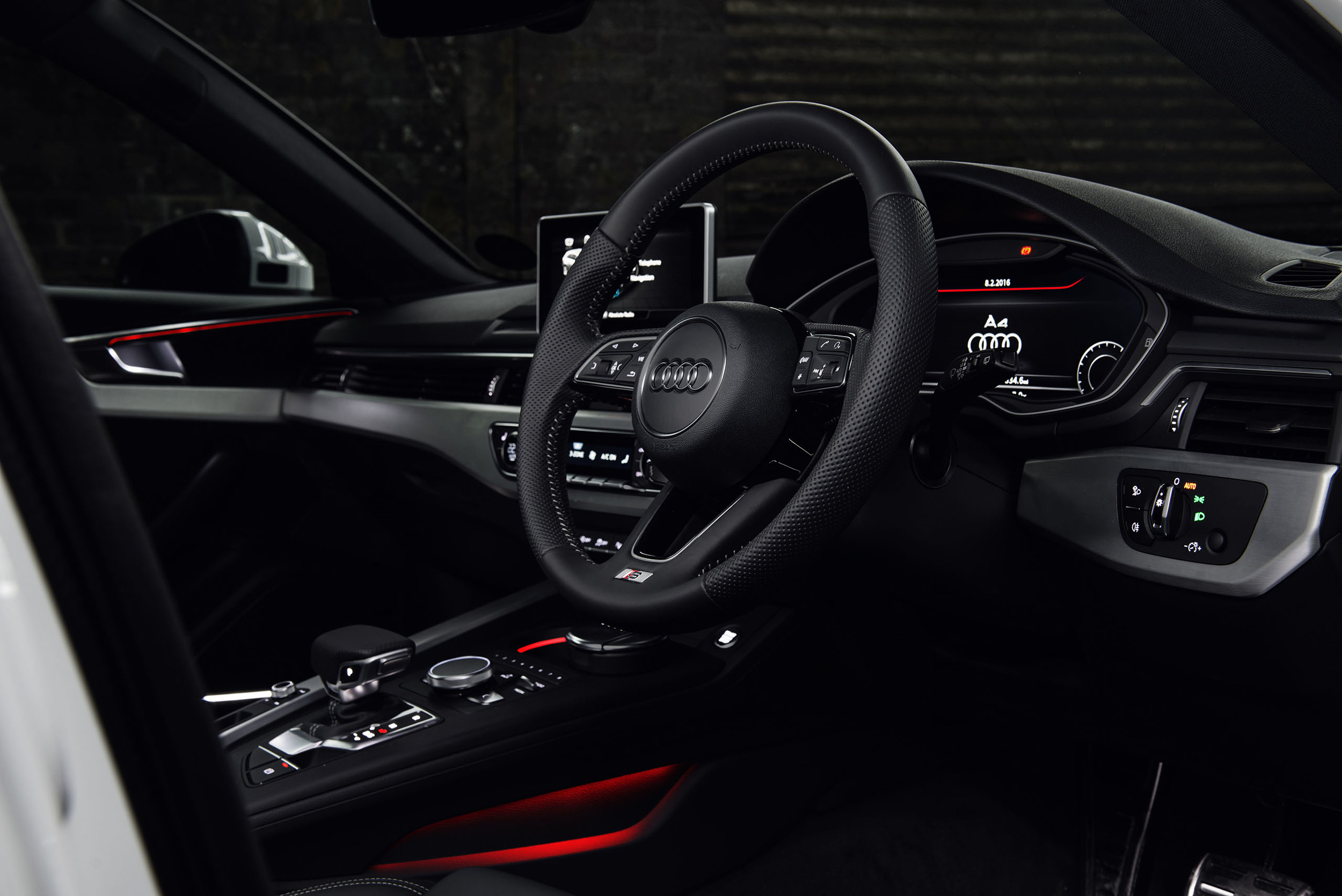
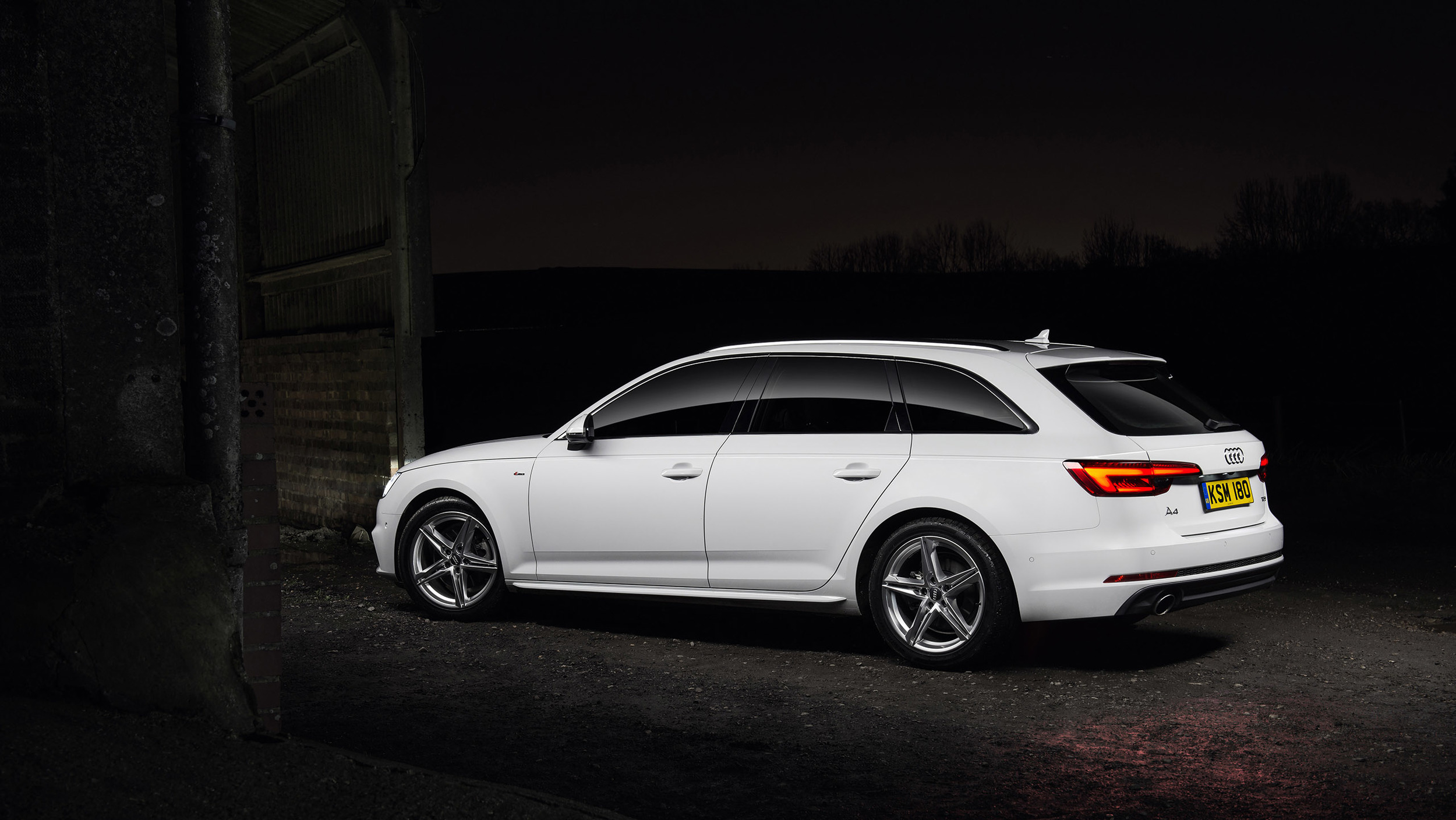
Audi has confirmed the new A4 Avant will cost from £27,300 OTR.
On sale form today the new A4 Avant is built on an all-new platform which results in a ‘class-leading’ 505 litres of luggage capacity – extending to 1,510 litres with the seats folded – into an interior that now affords more head and shoulder room for front seat occupants and increased overall rear leg room compared to its predecessor.
Prices ranging from the aforementioned £27,300 OTR for the A4 Avant 1.4 TFSI up to £40,350 OTR for the range-topping A4 Avant 3.0 V6 TDI quattro.
The Avant engine line-up will initially include a choice of 2.0 litre and 3.0-litre TDI engines with outputs starting from 150PS and rising to 272PS, mated to redeveloped six-speed manual, seven-speed S tronic and eight-speed tiptronic transmissions.
Standard equipment highlights include 17-inch alloy wheels, Xenon or LED headlights with LED DRLs, Audi smartphone interface, Audi drive select, three-zone climate control and 7-inch colour MMI monitor.
As in the Saloon, two versions of the 2.0-litre TDI engine with 150PS and 190PS power a total of 12 front-wheel-driven ‘ultra’ variants offering up to 70.6mpg with CO2 output of as low as 104g/km. The V6 TDI contingent starts with the 218PS version returns up to 64.2mpg with a 114g/km CO2 output when combined with Sport specification and front-wheel-drive.
The agility of the five-link fully independent front and rear suspension can be ‘amplified further’ by adding a more intelligent and faster-reacting evolution of quattro all-wheel-drive as an option for 2.0 TDI 190 and 3.0 TDI 218 engines. The purely mechanical system with its self-locking centre differential is also a standard feature of the 2.0 TFSI 252PS and 3.0 TDI 272PS versions.
The Audi A4 Avant is on sale now.
More power for flagship Audi RS Q3 Performance


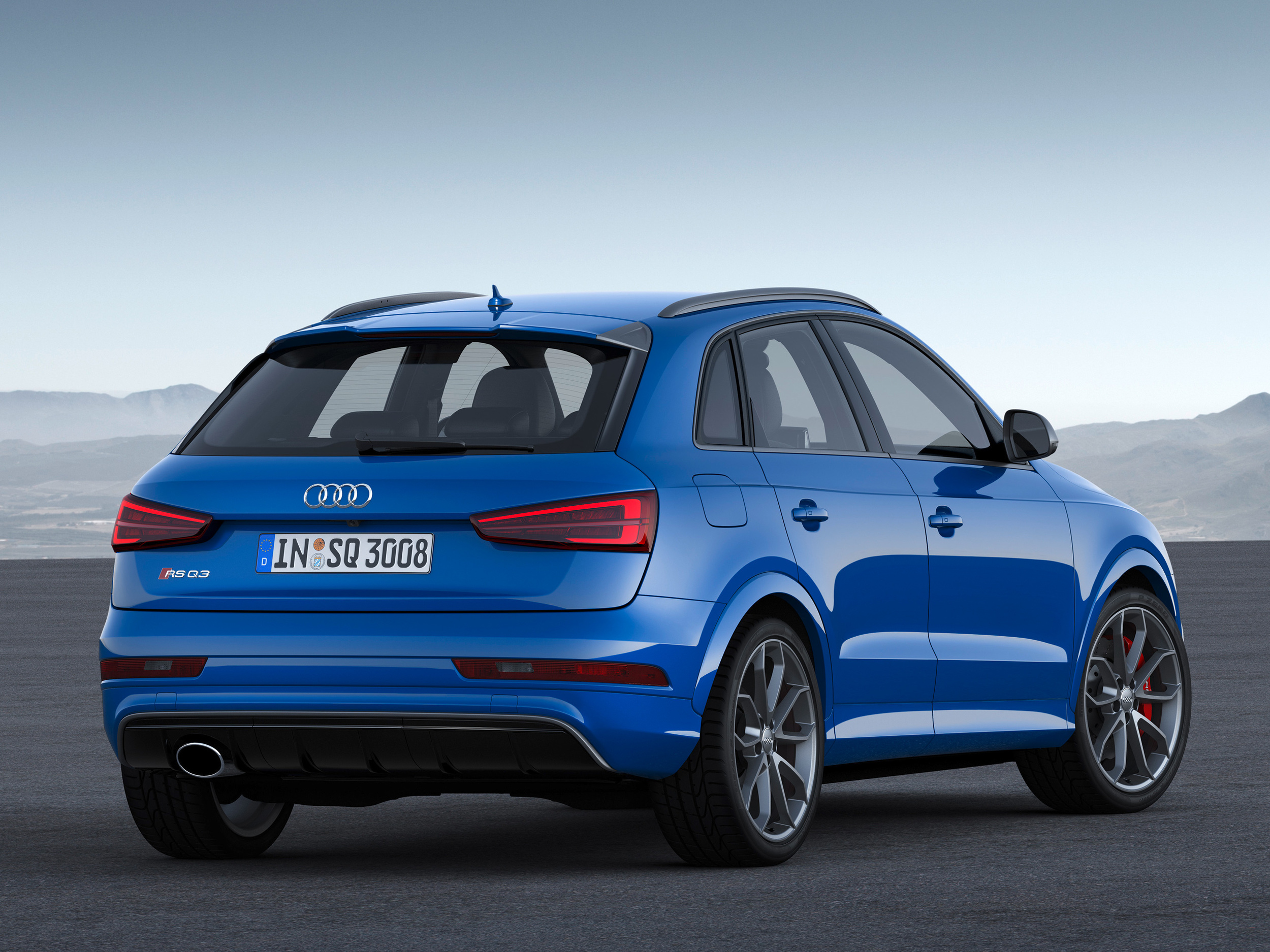
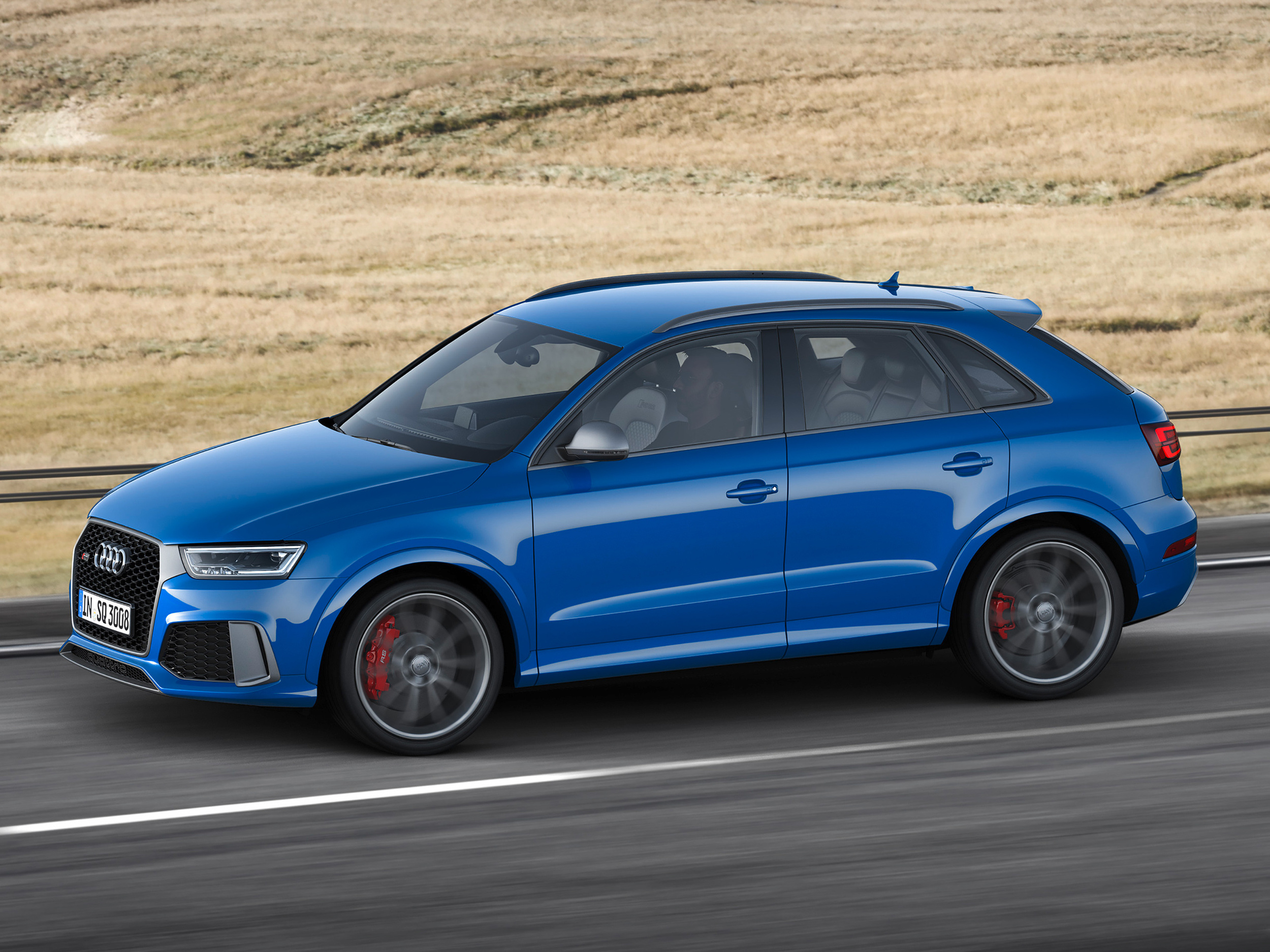
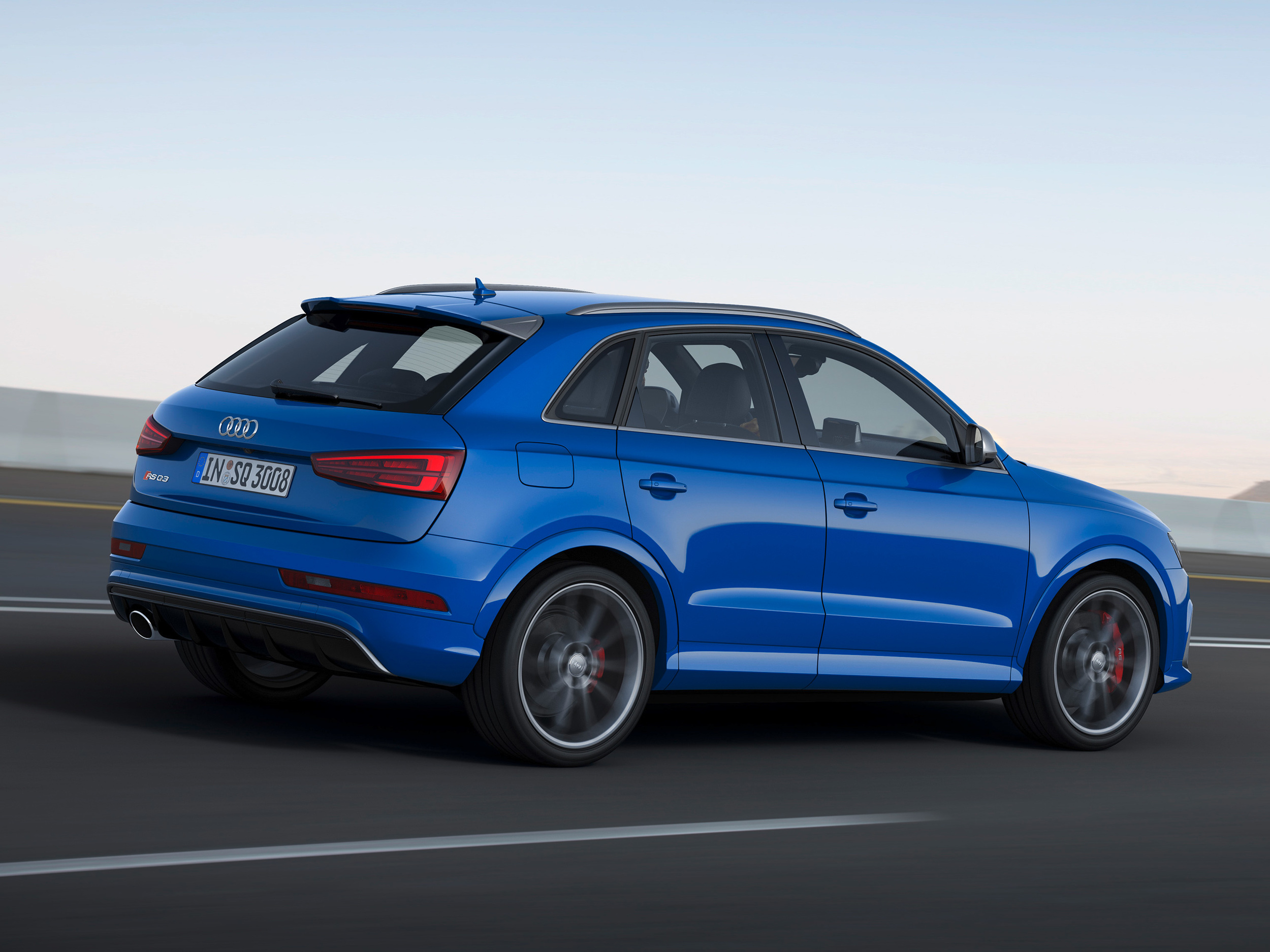
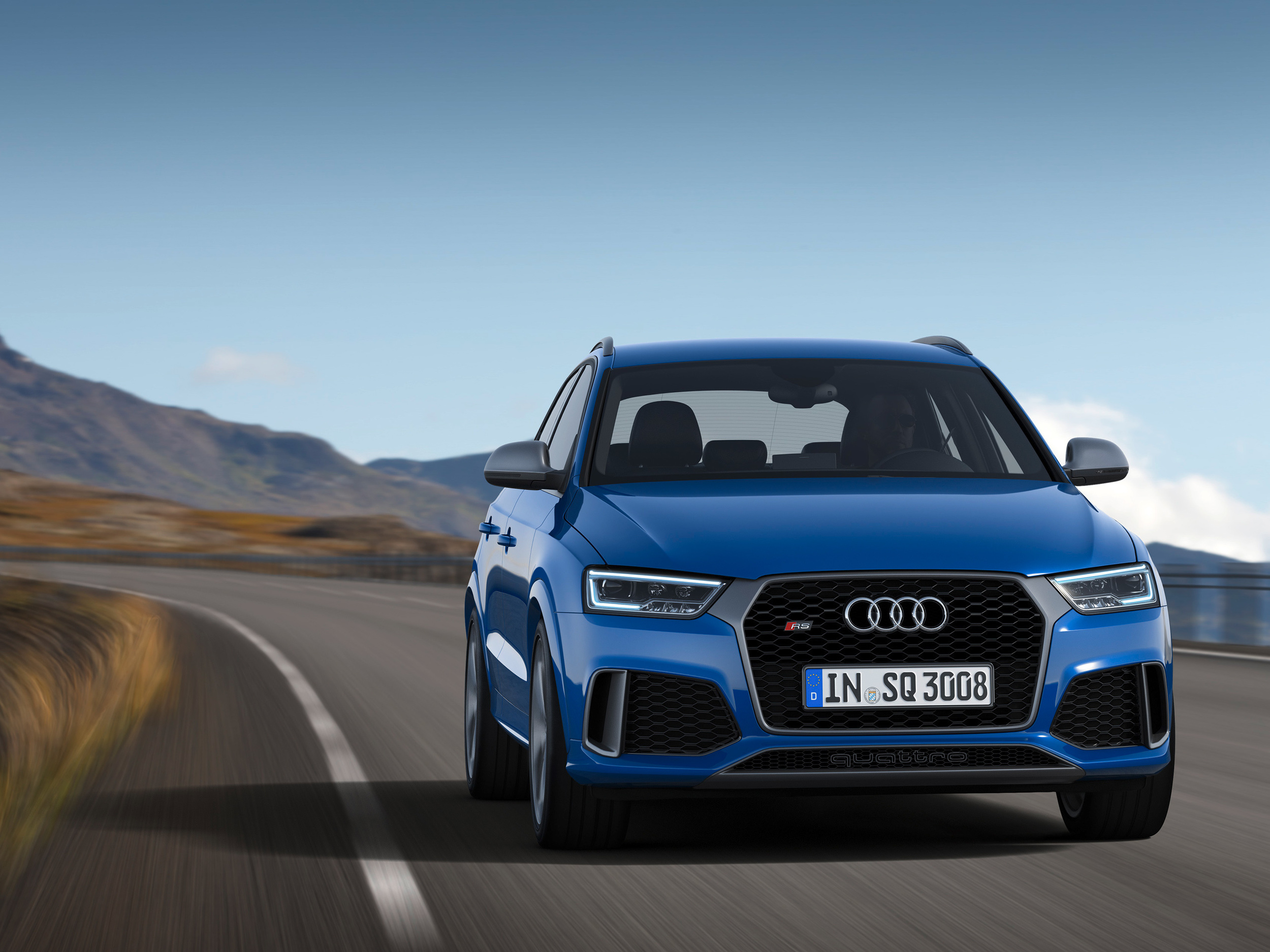
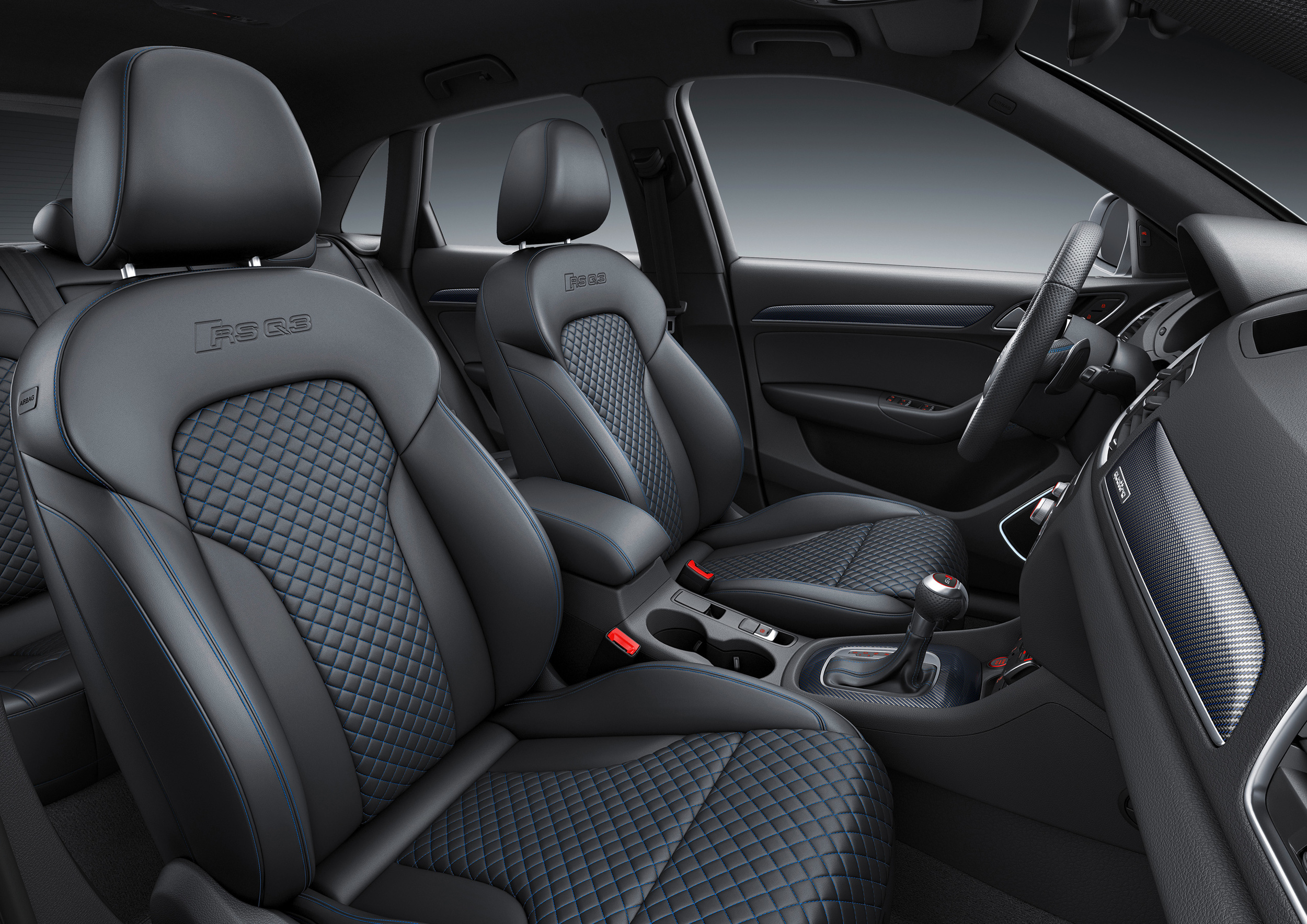
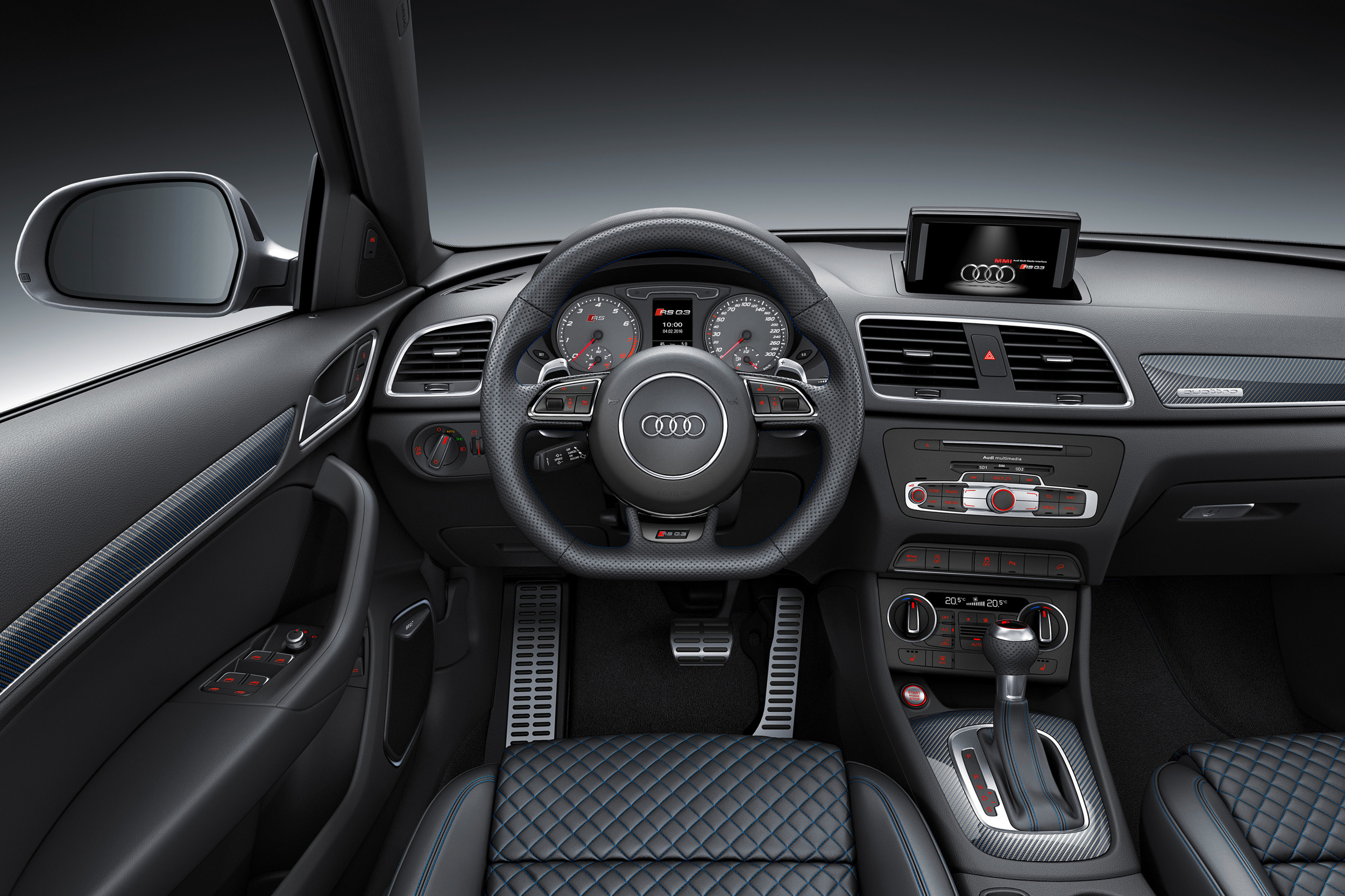
Audi has topped off its Q3 range with a new 'RS performance' model pumping out 367PS - an increase of 27PS over the 'standard' RS Q3.
Joining RS 6 and RS 7 performance variants in the new wave of models positioned above regular RS equivalents, the RS Q3 performance boasts improved acceleration on the way to a 167mph top speed, and features equipment enhancements
which help distinguish it from its namesake.
Power comes from a revised version of the five-cylinder 2.5-litre TFSI petrol engine mated to a seven-speed S tronic transmission. Peak torque of 465 Nm (343.0 lbft) is available between 1,625 and 5,550 rpm, helping the compact SUV reach 62mph from rest in 4.4 seconds (RS Q3 4.8), yet deliver combined consumption of up to 32.8mpg, which corresponds to CO2 emissions of 203 g/km.
The sports suspension has been lowered by 20mm while quattro permanent all-wheel drive transfers the power to the road via a hydraulically actuated, electronically controlled multi-plate clutch.
RS design details include restyled bumpers with large air inlets up front, a heavily profiled diffuser insert at the rear and gloss black honeycomb grilles.
The exterior is also distinguishable from the 'standard' RS Q3 through additional matt titanium-look detailing, 20-inch 'performance exclusive' alloy wheels and the exclusive option of Ascari blue metallic paint.
Inside the instrumentation features grey faces, white dials and red needles. Sports seats in Alcantara and leather with honeycomb stitching in blue are standard for UK models, and the blue accents are also applied to other elements throughout the cabin.
UK order books for the new Audi RS Q3 performance are expected to open later this month with prices starting from £49,175 on the road.
Concept Car, 4x4, Electric, Motorshow, News, SUV
Audi unveils h-tron quattro concept in Detroit
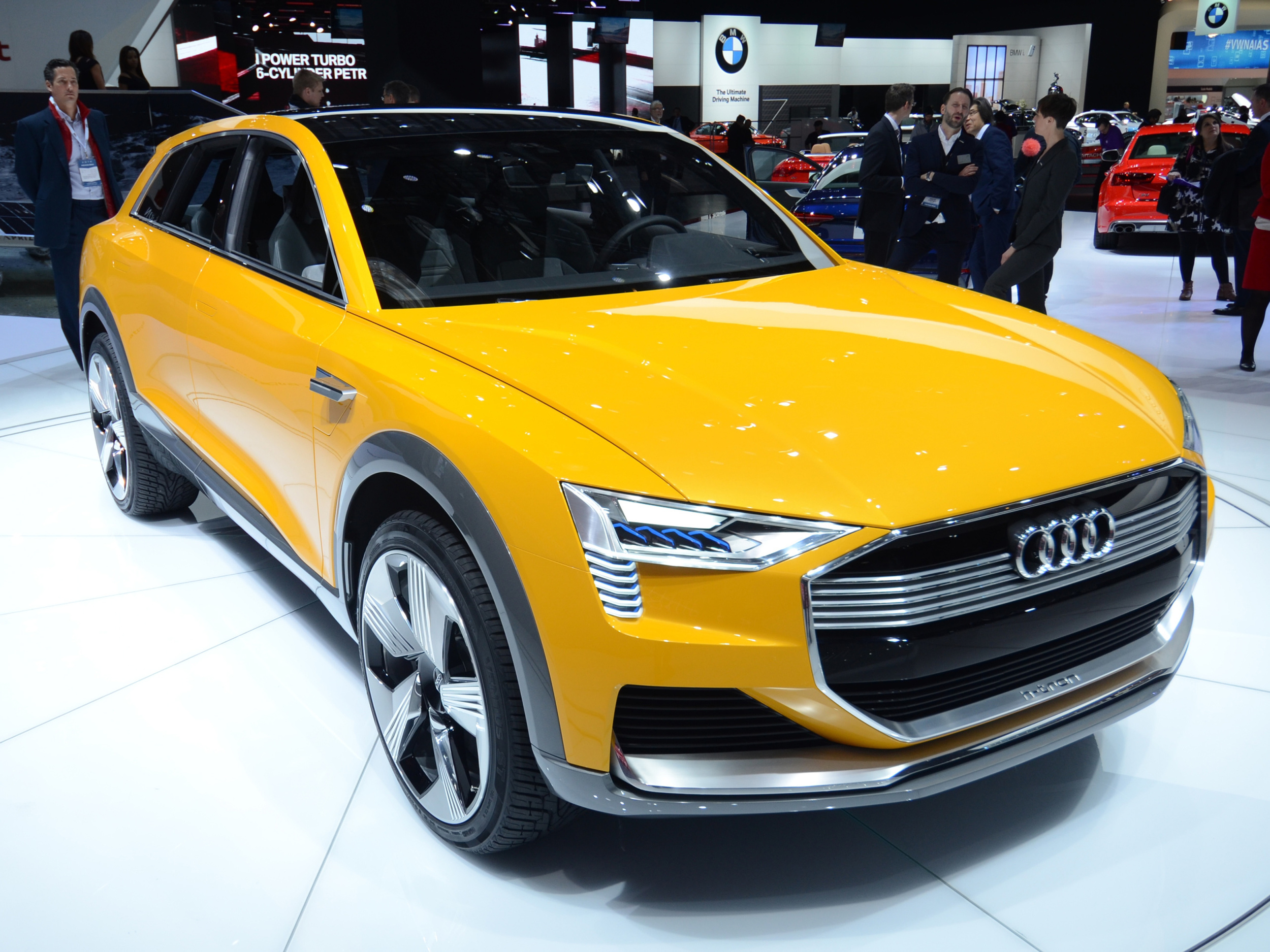
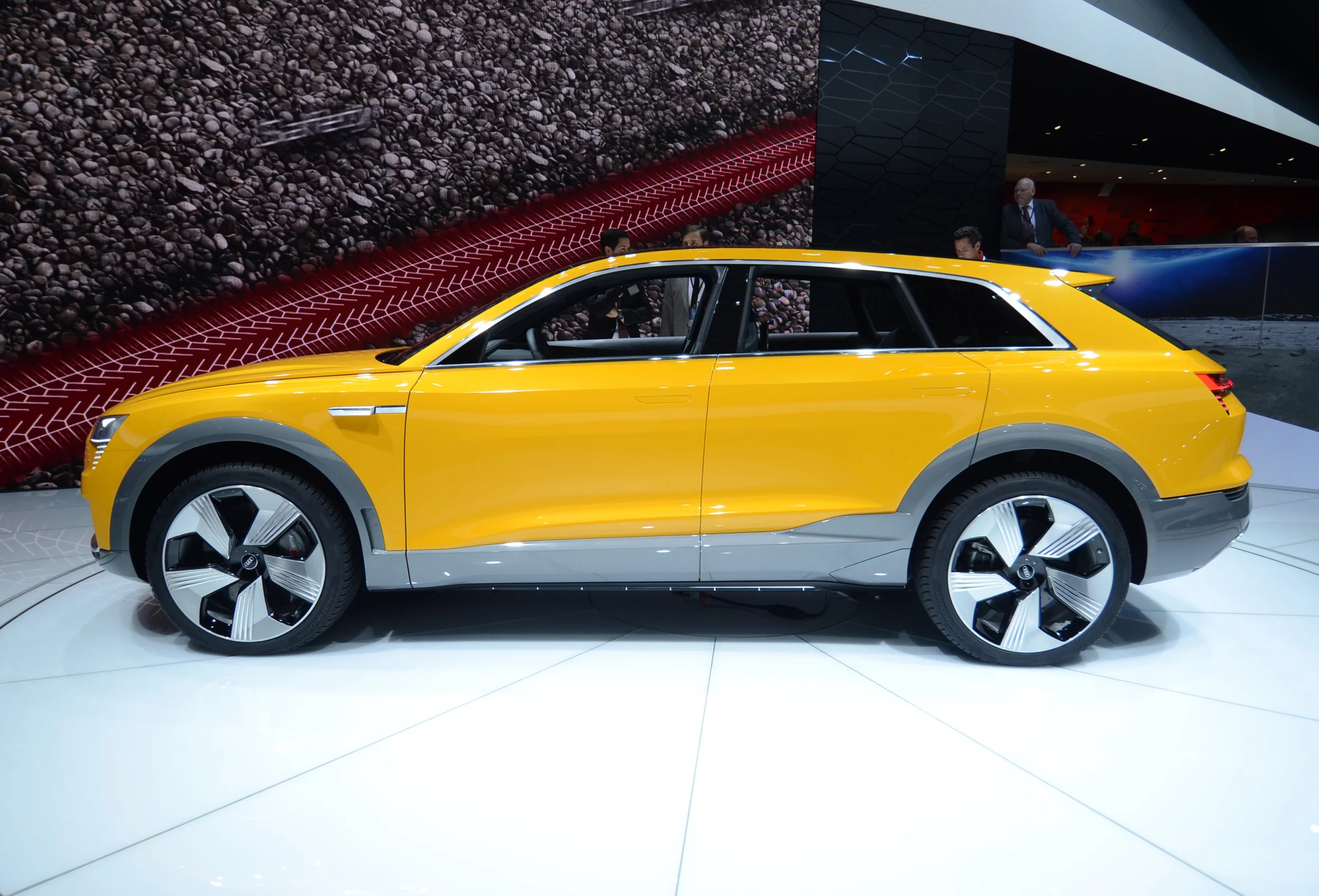

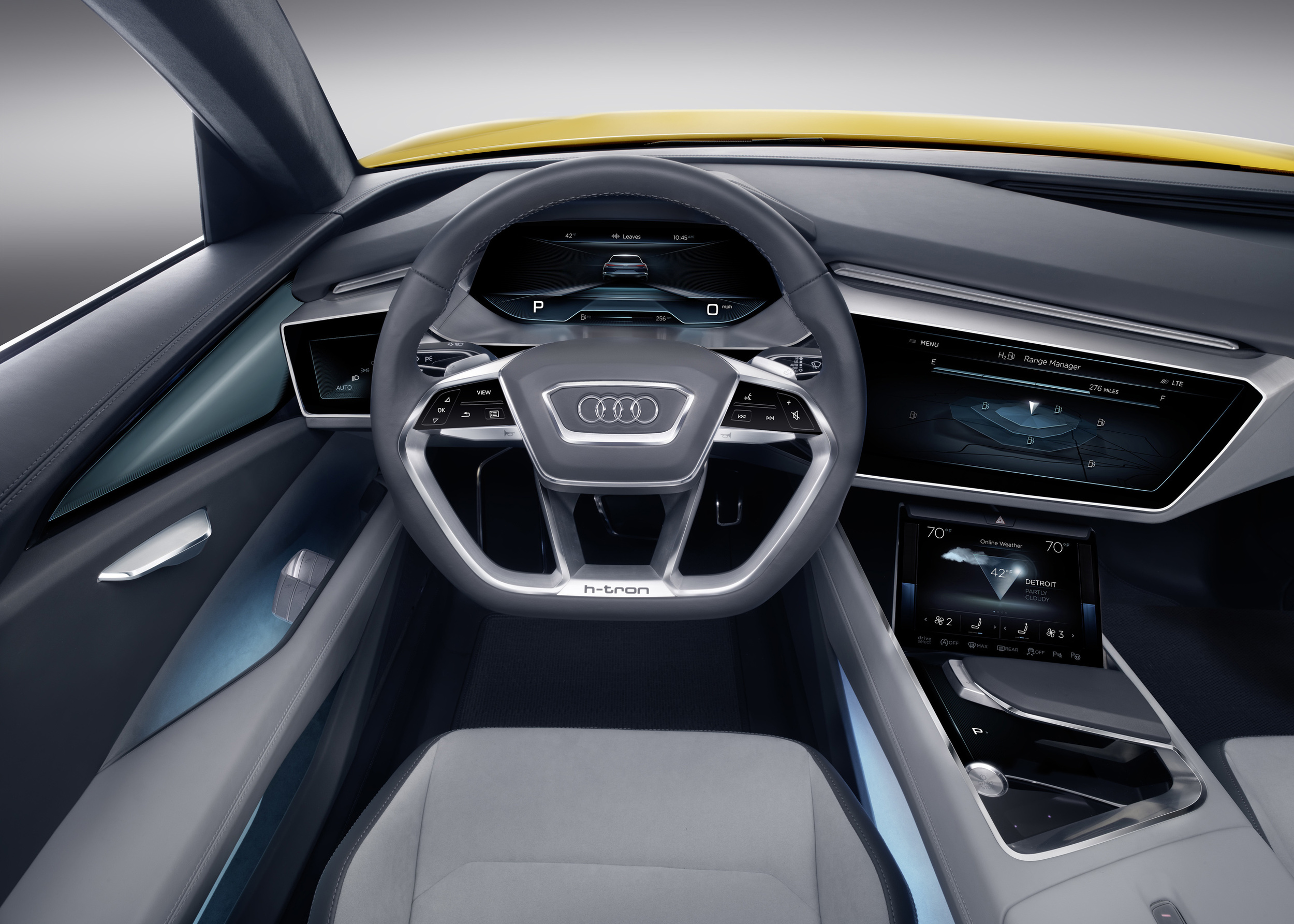
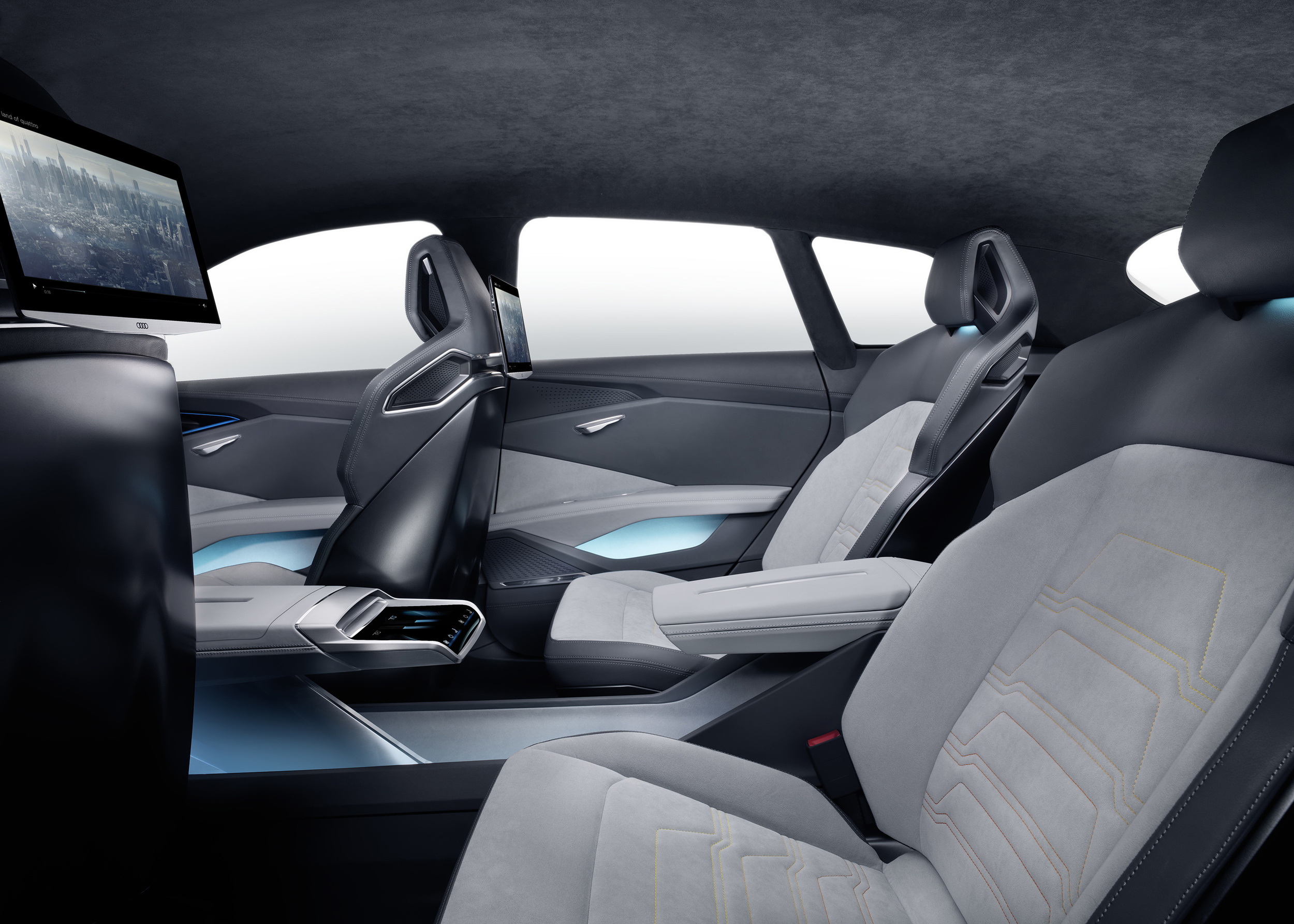
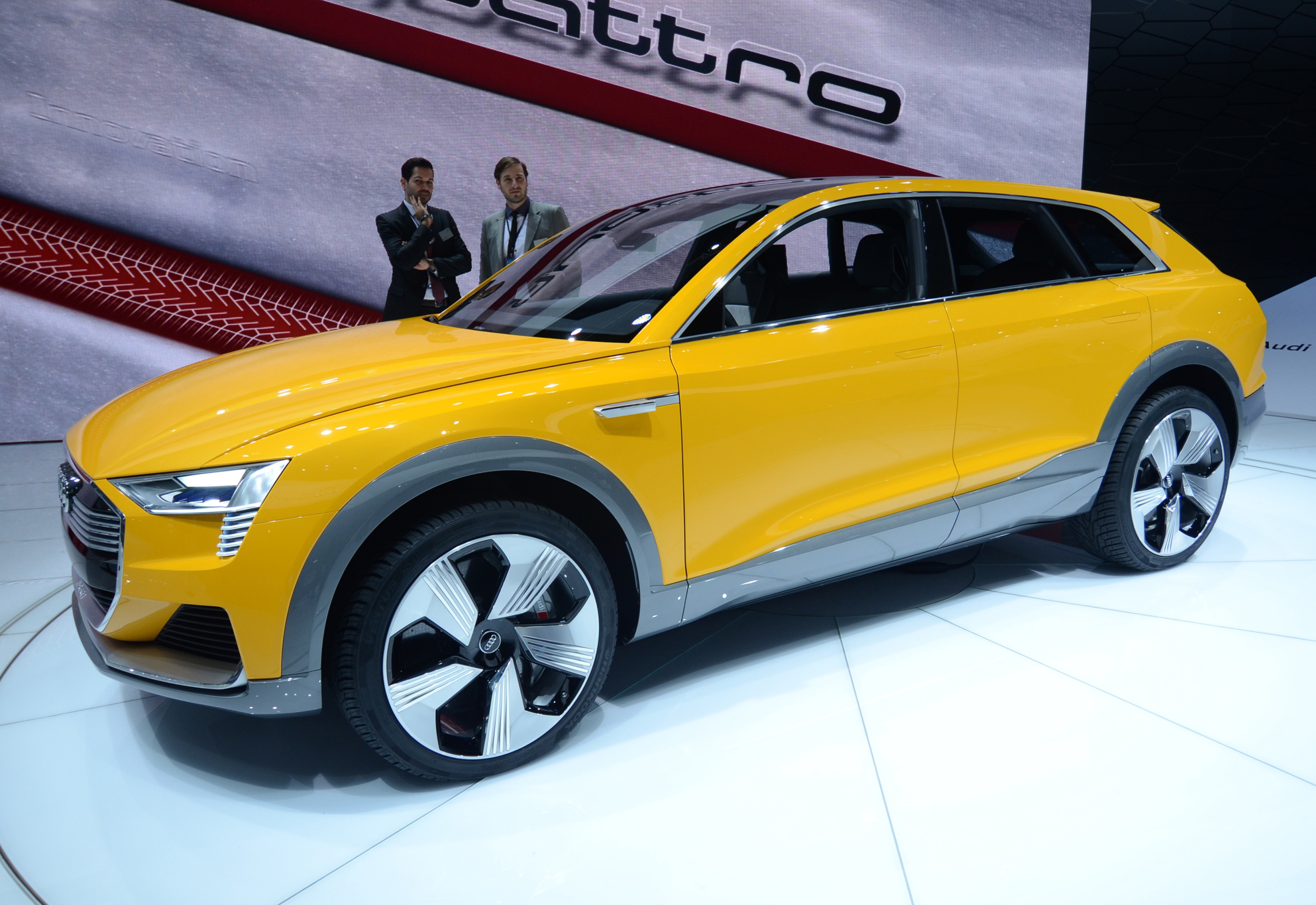

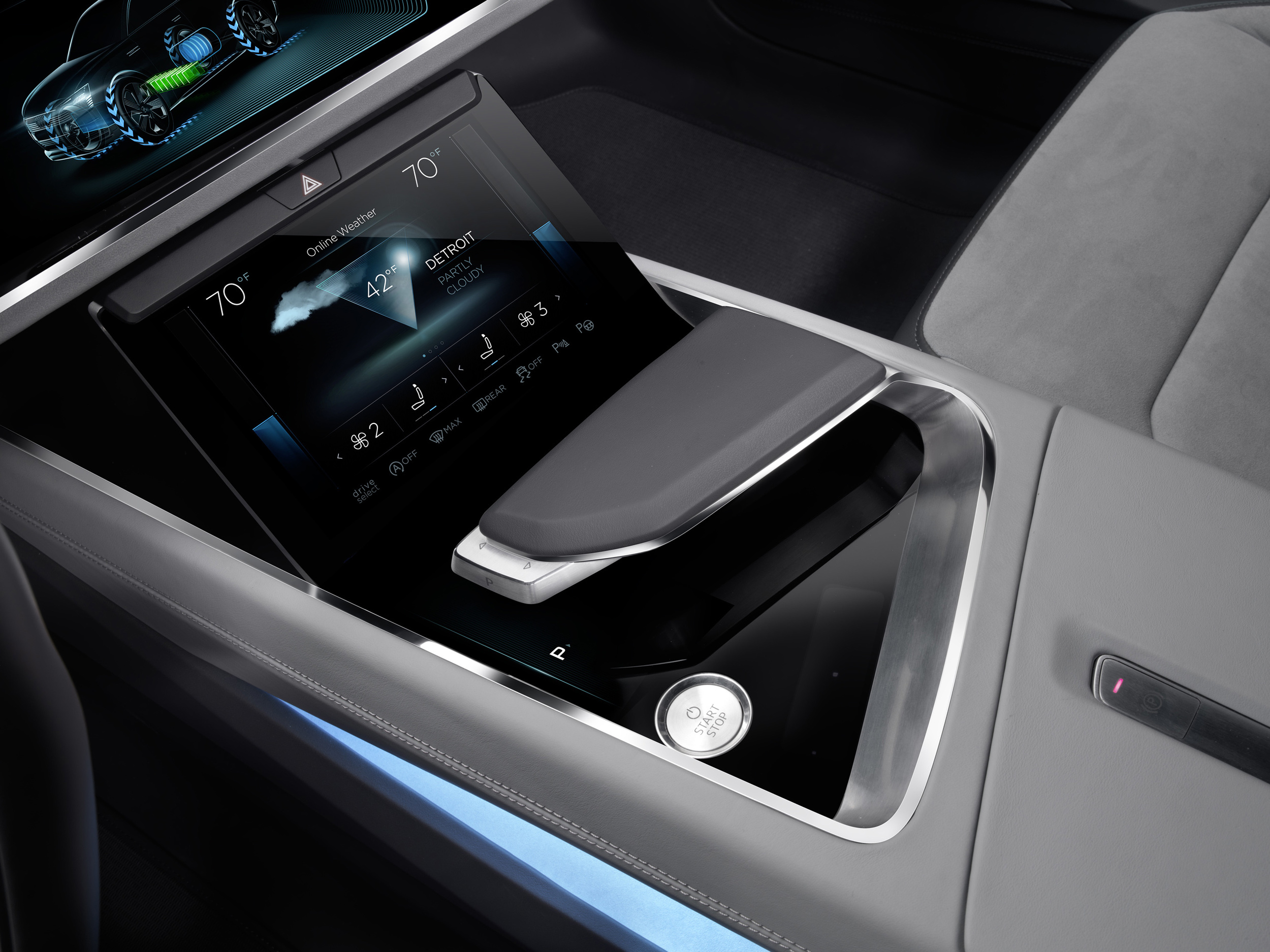
Audi has pulled the covers off the h-tron quattro concept car at the NAIAS in Detroit
Described as the next step towards the long-term Audi goal of CO2-neutral mobility, the SUV concept is powered by a fuel cell with an output of up to 110 kW backed up by a further on-demand power boost of 100 kW from a lightweight lithium-ion battery.
Total system torque of 550 Nm equates to acceleration from 0-62 mph in under seven seconds and a 124 mph top speed.
It can be fully refuelled with hydrogen in around four minutes, and is then ready to drive for up to 372 miles (600 km). An extra energy boost comes from the fitment of the world’s largest in-car solar roof, offering up to 320 watts output or additional range of up to 620 miles (1,000km) per year
The h‑tron quattro concept is closely related to the fully electric e‑tron quattro concept SUV which made its debut at the 2015 Frankfurt Motor Show. Both cars are based on the second-generation modular longitudinal platform (MLB evo), sharing a virtually identical floor assembly despite their different technology.
The h‑tron quattro concept presents the fifth generation of fuel cell technology from Audi and Volkswagen, using lighter materials to reduce weight and improve performance, responsiveness, service life and efficiency.
With an efficiency rating in excess of 60 percent, Audi claims that the fuel cell now surpasses any combustion engine. The “stack”, comprising 330 individual cells, is housed in the forward structure.
The three hydrogen tanks are located beneath the passenger or luggage compartment. At a pressure of 700 bar, they store enough hydrogen for a range of up to 372 miles (600 km).
Every tank is made up of several layers – the inner tank from gas-tight polyamide is wrapped in carbon fibre reinforced polymer (CFRP) and glass fibre reinforced polymer (GFRP). Like a car with a combustion engine, refueling takes about four minutes.
Offering seating for four adults and 500 liitres of luggage space, the five-door Audi h‑tron quattro concept is 4.88 metres long and 1.93 metres wide but its relatively low height of 1.54 metres contributes to a drag coefficient of 0.27. Aerodynamic elements down the flanks, on the underbody and at the rear improve airflow around the car at higher speeds, while cameras take the place of exterior mirrors, to improve efficiency still further.
The h-tron’s headlights and tail lights utilise a combination of high-resolution Matrix laser technology and flat OLED (organic light emitting diode) elements which radiate a blue light to the sides and upwards.
The concept also comes equipped with all the Audi’s piloted driving technologies – radar sensors, a new kind of video camera, ultrasonic sensors and a laser scanner.
Audi says it will be taking this technology into production for the first time ever in 2017, with the next generation of its A8 Saloon.
Audi’s growth plans include all-new Q2 model
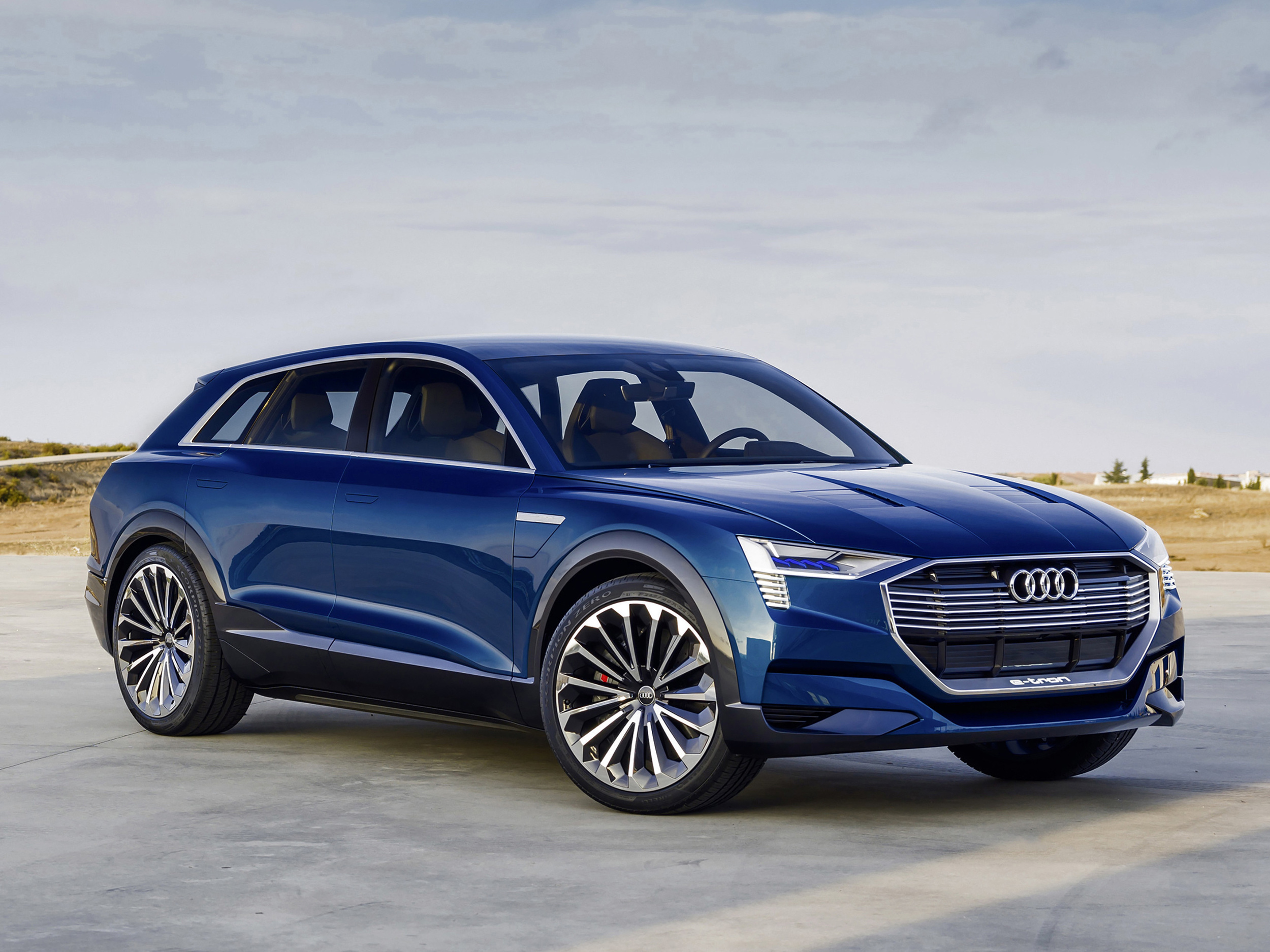

Audi bosses have announced growth plans for the brand in 2016, including the launch of a Q5 replacement as well as a new Q2 model.
The carmaker intends to invest more than 3 billion EURO over the coming financial year with half the expenditure earmarked for the German sites in Ingolstadt and Neckarsulm.
“We are continuing with our high levels of investment in future technologies to enhance the strong position of our brand,” said Audi CEO Rupert Stadler.
The introduction of the Q2 will see Audi enter a new market segment. The ‘Q’ naming convention is reserved for SUVs but the use of the even number ‘2’ could suggest something slightly different to a straightforward compact crossover.
In addition, Audi will present the successor to the Q5 SUV in 2016, followed in 2018 by the launch of the its first large‑series battery‑electric vehicle, based on the Audi e-tron Quattro concept.
“A significant proportion of our investment is naturally in the field of alternative drive systems,” stated Stadler.
Audi is continuing to push forward in the field of ‘digitalisation’, following its acquisition in December of a one‑third interest in HERE, a leading provider of digital maps and location-based services, at a cost of 0.85 billion EURO.
In order to maintain its reputation for “Vorsprung durch Technik”, Audi plans strengthen its workforce in 2016 with specialists in alternative drive systems and lightweight construction, as well as IT specialists.
By 2020, Audi plans to expand its model range to include 60 different vehicles.
Audi to present latest tech at CES

Audi set to attend world's largest electronics trade show for the sixth time
Audi is set to present its latest technologies and models at the International Consumer Electronics Show (CES) in Las Vegas next month.
Once again, the press conference on the first day of the show will be followed by the Audi Tech Talk, at which technology experts will be available to answer questions.
At the press conference, Ricky Hudi, Head of Development Electrics/Electronics, and Scott Keogh, President of Audi of America, will address the latest trends, technologies and products in the areas of infotainment and Audi connect, controls and displays as well as electrification and lighting technology.
With a concept car and numerous technology exhibits, Audi says it will be offering an outlook on the automotive future, which will be influenced more than ever by the electronics field.
At the Audi Tech Talk, which is open to the public, technology experts will offer an in-depth look at electronics development and will be available to answer questions from journalists and show visitors.
The world’s largest electronics trade show is highly significant for Audi. In 2011, it was the first carmaker to make an appearance at CES with its own exhibit space.
CES is being held in Las Vegas from 6-8 January, 2016.
Audi adds Sport trim to A6 allroad
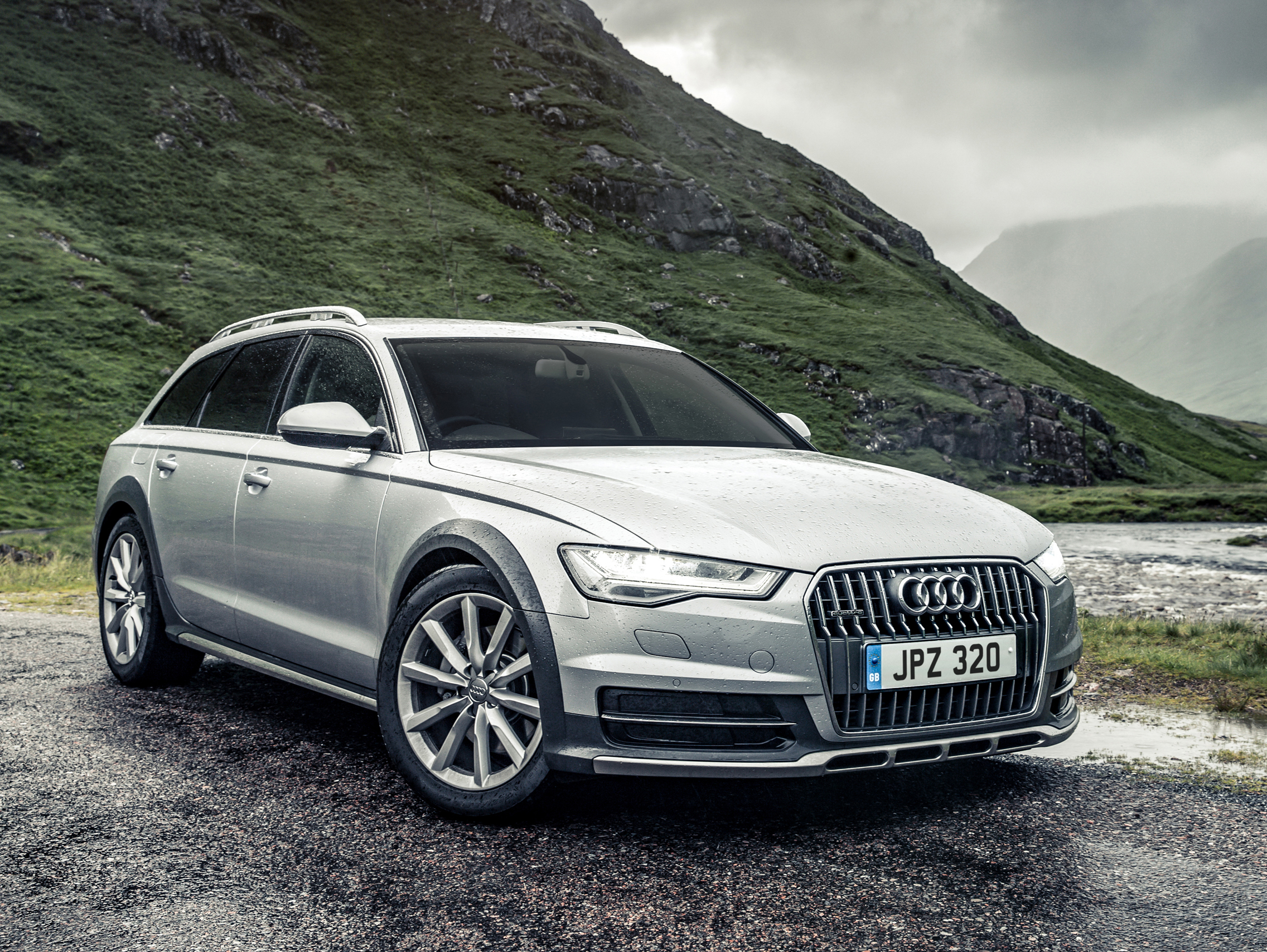
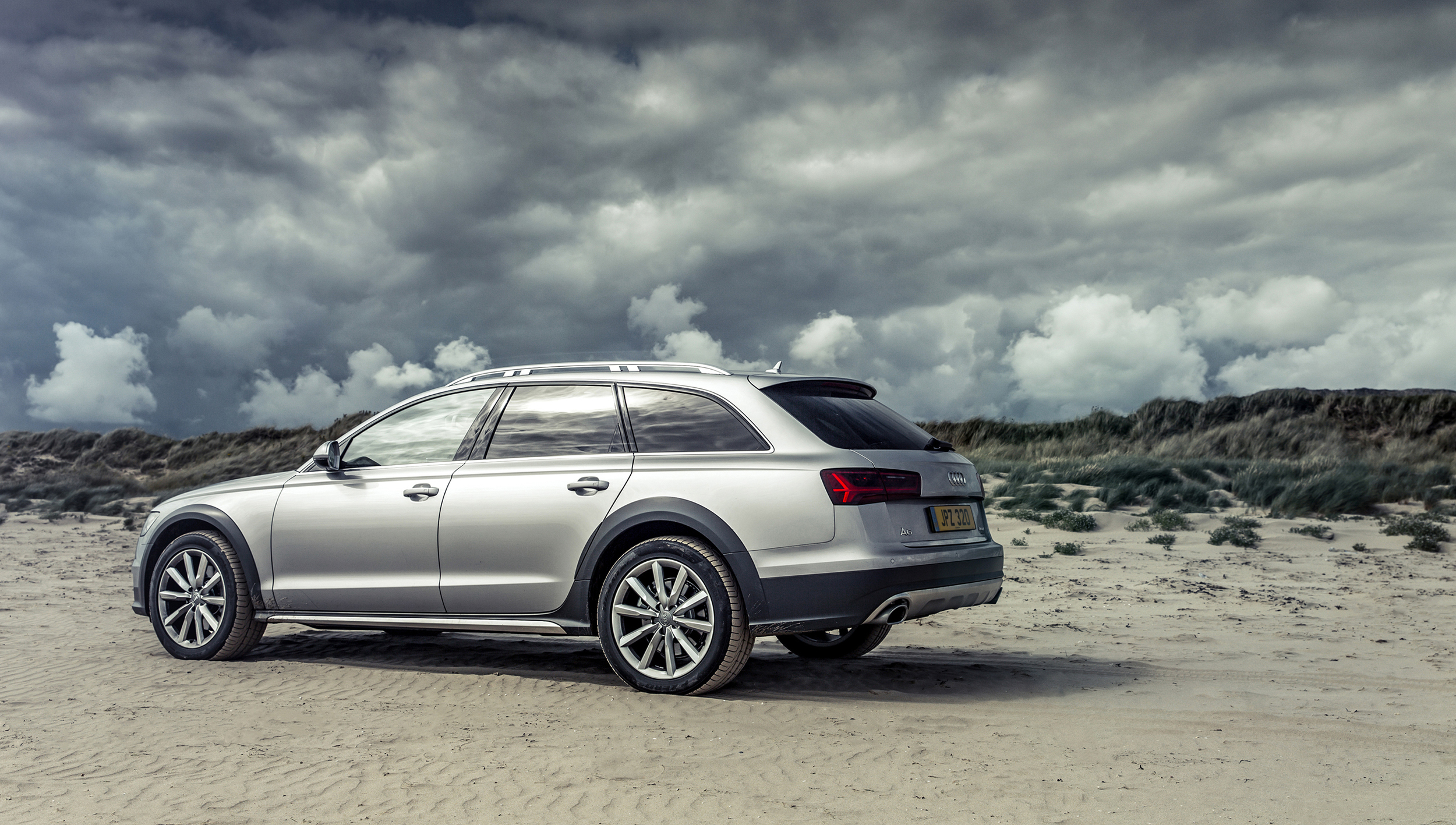
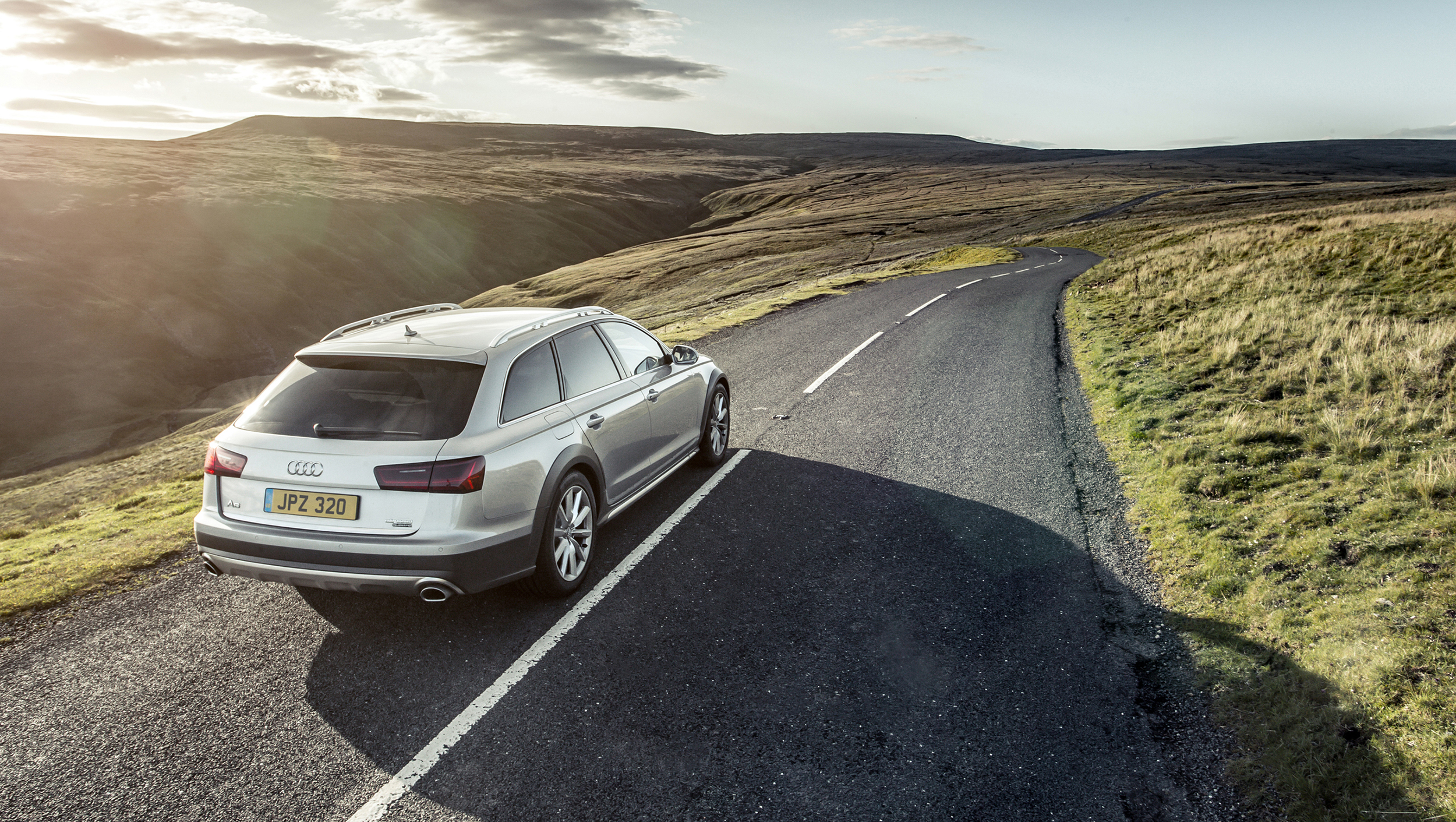


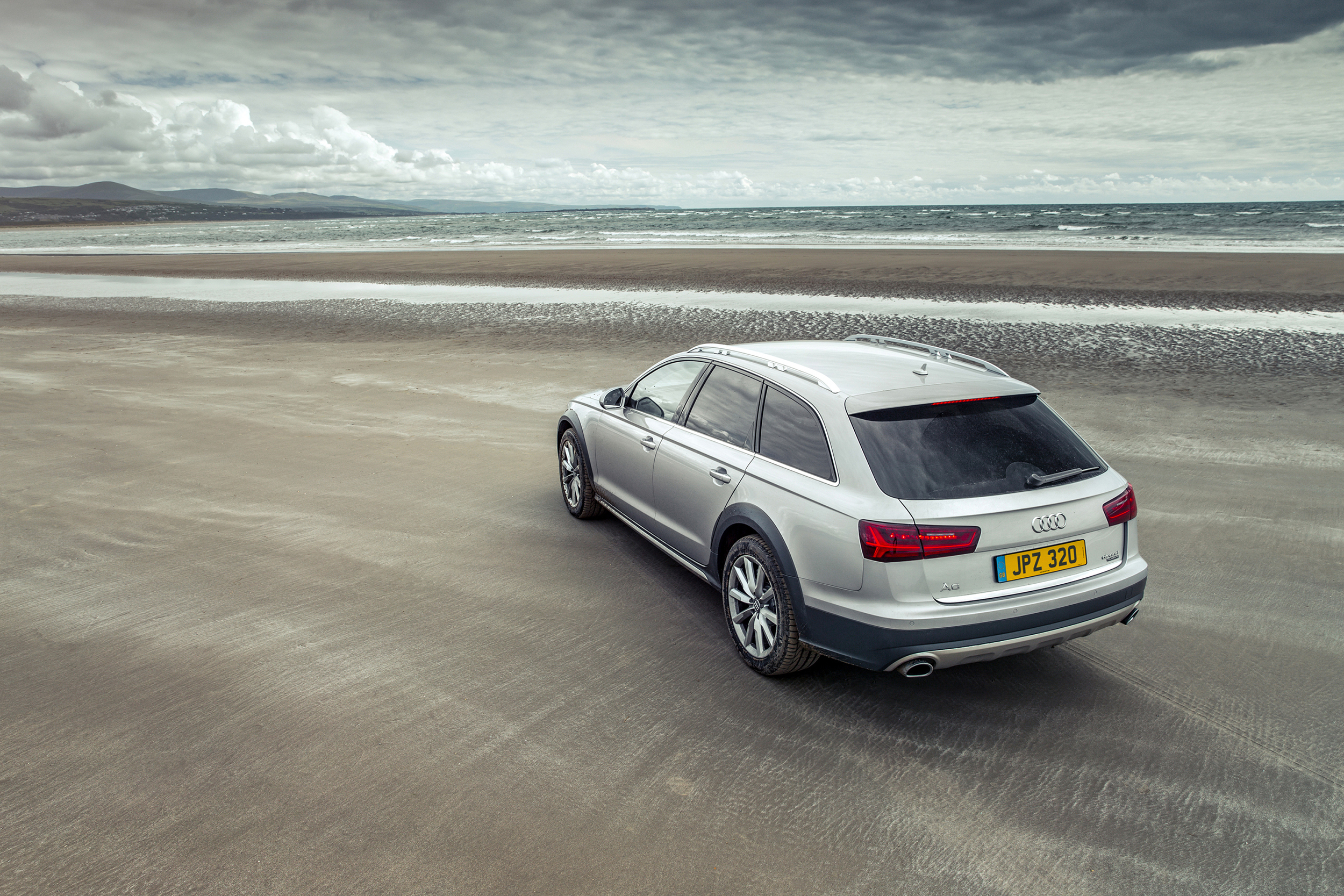
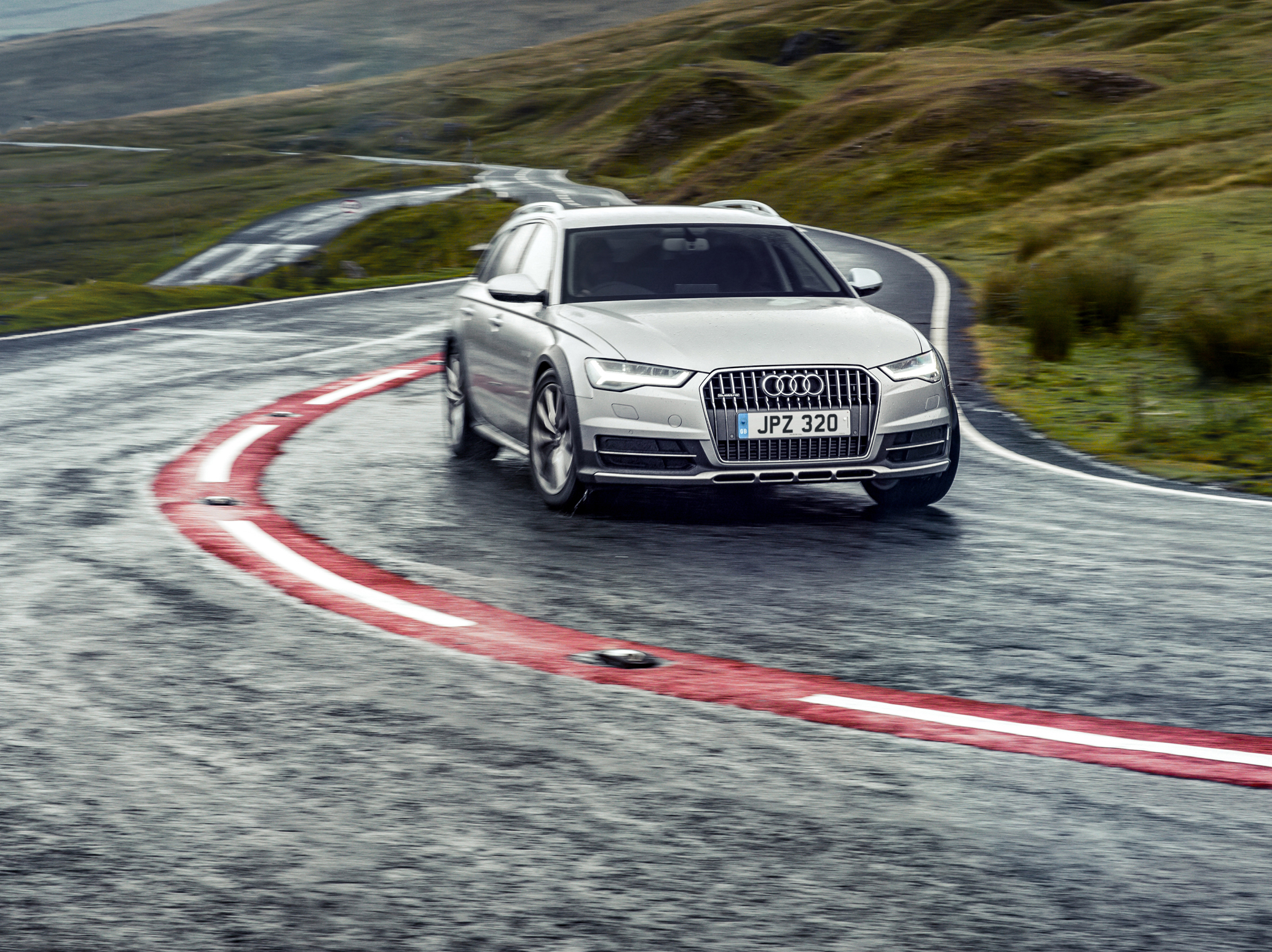

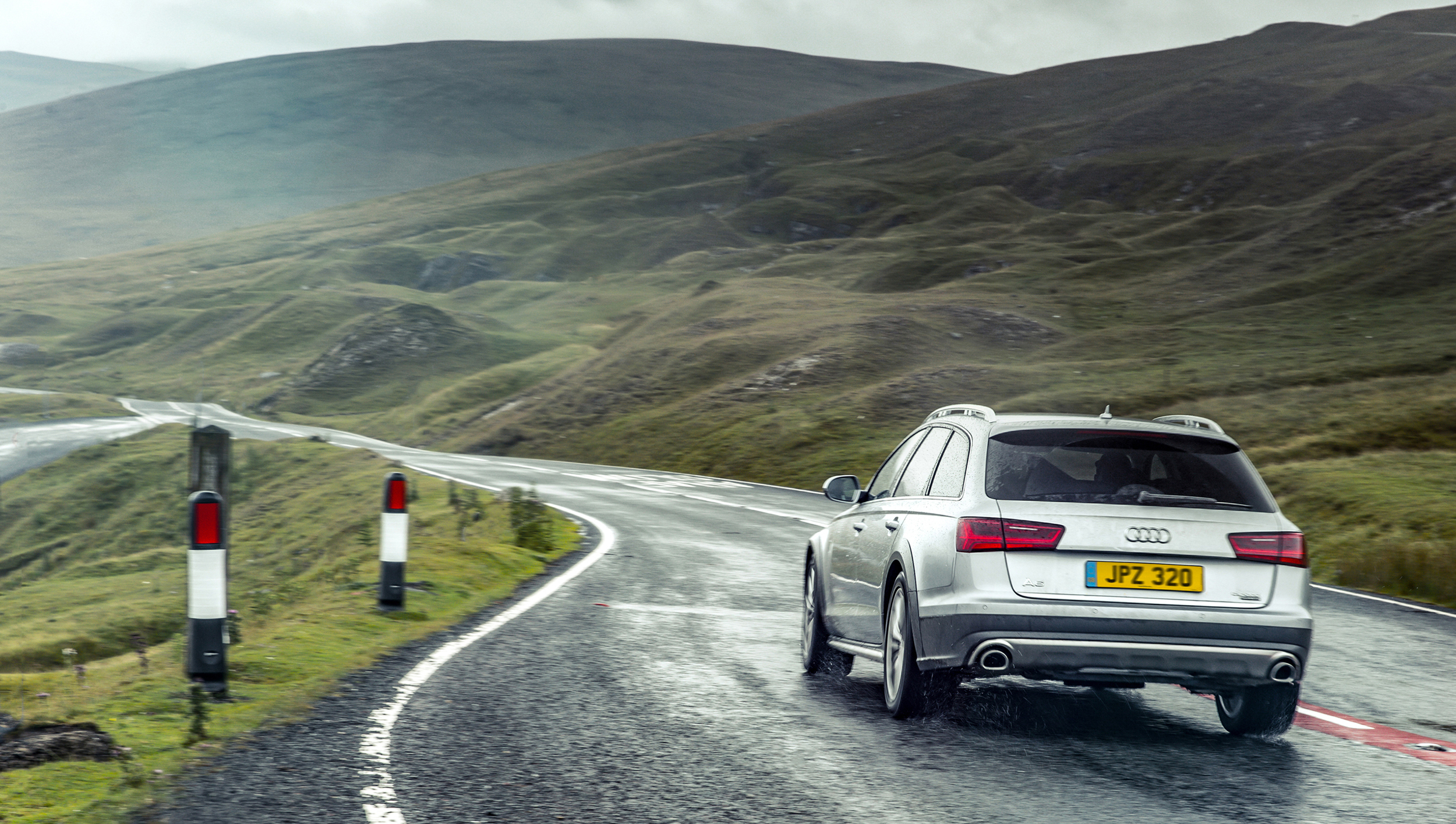


Audi has added a Sport trim to its A6 allroad quattro.
The Sport specification adds full LED headlights, replacing the bi-xenon units of standard A6 allroad models to further enhance visibility. A high beam assist function is also added as standard to automatically dip the beam when oncoming traffic is approaching. At the rear in Sport models, dynamic LED turn signals that operate in a sweeping motion have also been added.
New 10-spoke design, 19-inch alloy wheels with a matt titanium finish, privacy glass and heated and folding mirrors round out the exterior enhancements, while inside sports seats in upgraded Valcona leather with full electric adjustment are complemented by 'luxurious' Alcantara door inserts.
Adaptive air suspension is fitted to every A6 allroad, helping in all-terrains while a dynamic or comfort mode can be selected using the Audi drive select system.
A choice of three EU6-compliant six-cylinder TDI engines power the new A6 allroad quattro in standard and Sport specification. The 218 PS and 272 PS engines are mated to a seven-speed S tronic twin-clutch transmission, while the 320 PS and 650Nm output of the BiTDI is fed to the wheels via an eight-speed tiptronic transmission.
The latter delivers a 0-62mph time of 5.5 seconds and a 155 mph limited top speed. Up to 43.5 mpg is achievable, linked to CO2 output of 172 g/km. Combined fuel efficiency increases to a possible 50.4 mpg for the 218 PS and 51.4 mpg for the 272 PS, while CO2 drops to 149 and 145 g/km respectively.
Available to order now, pricing starts from £49,455 OTR for the A6 allroad Sport V6 TDI 218 PS to £55,825 OTR for the V6 BiTDI 320 PS model.
Hybrid, News, Coupe, Diesel, Supercars
Audi unveils new R18 Le Mans racer
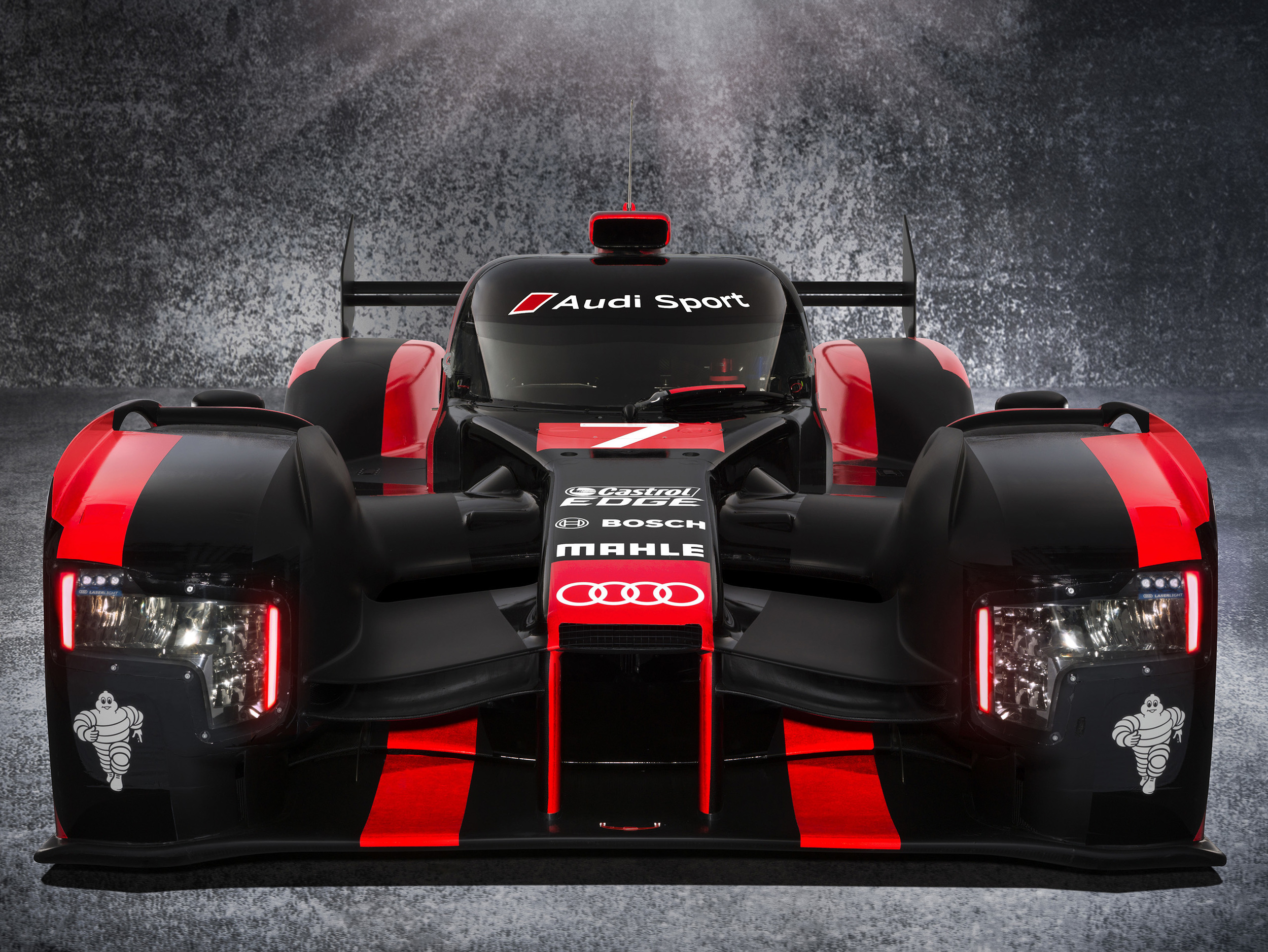
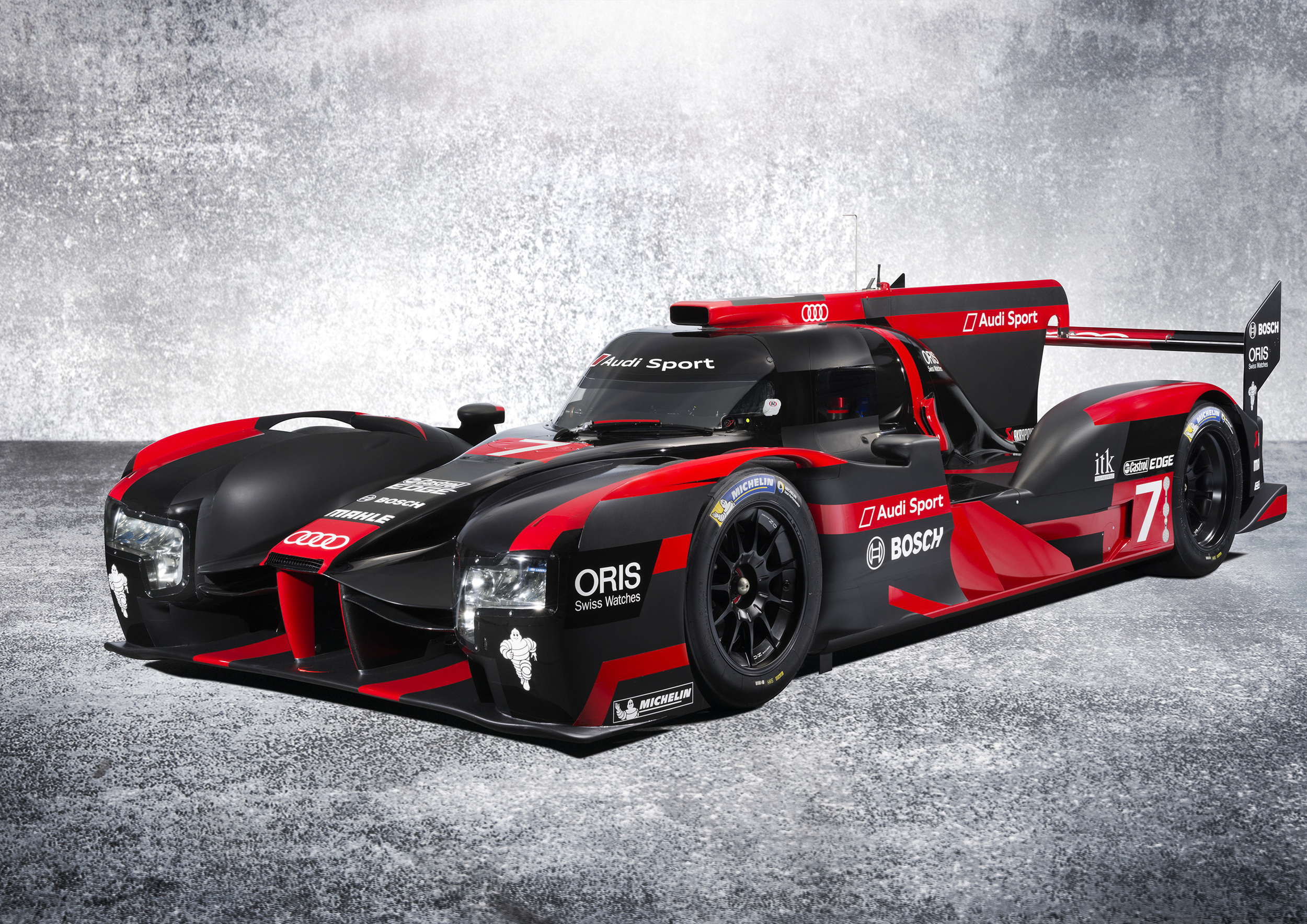
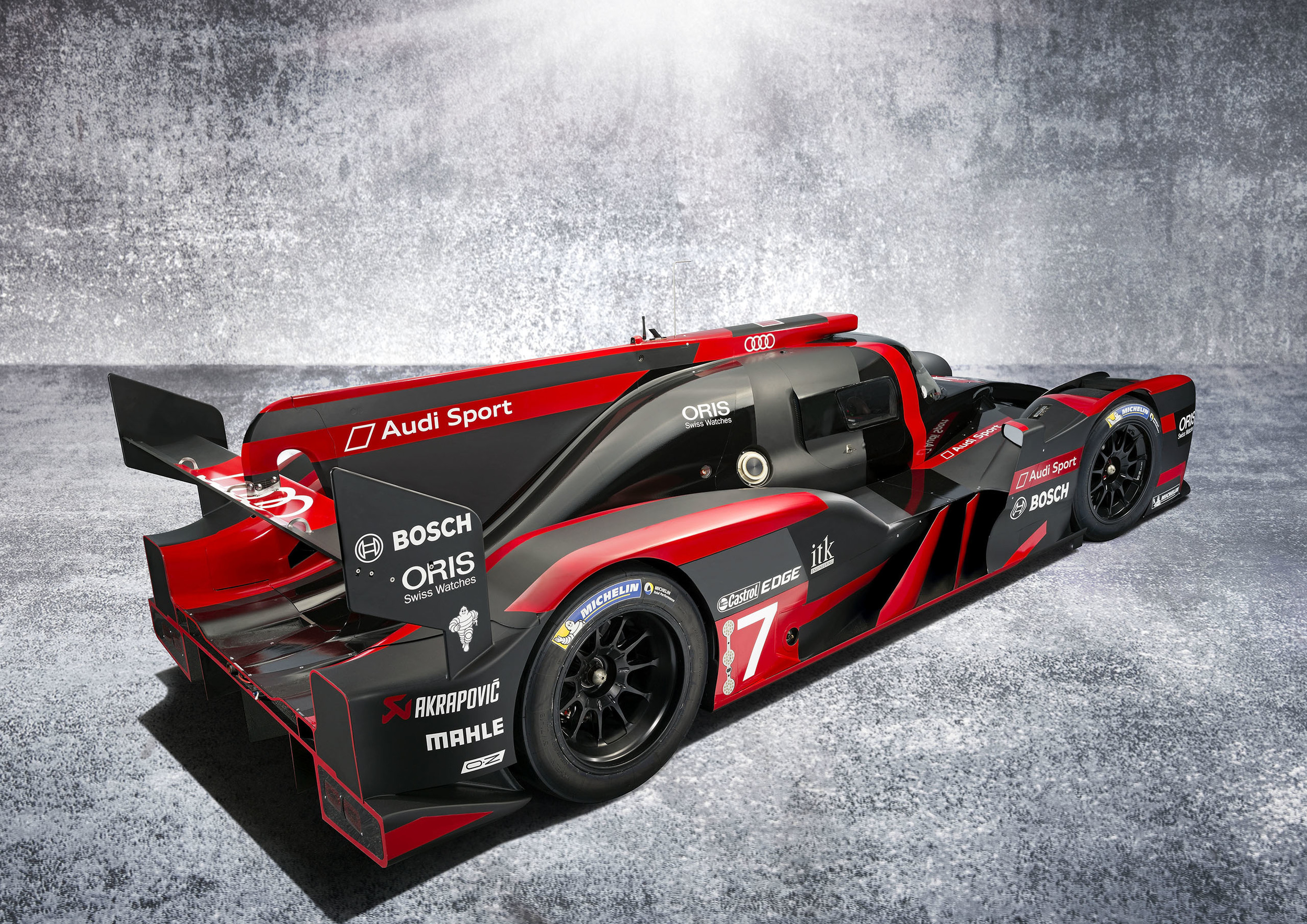
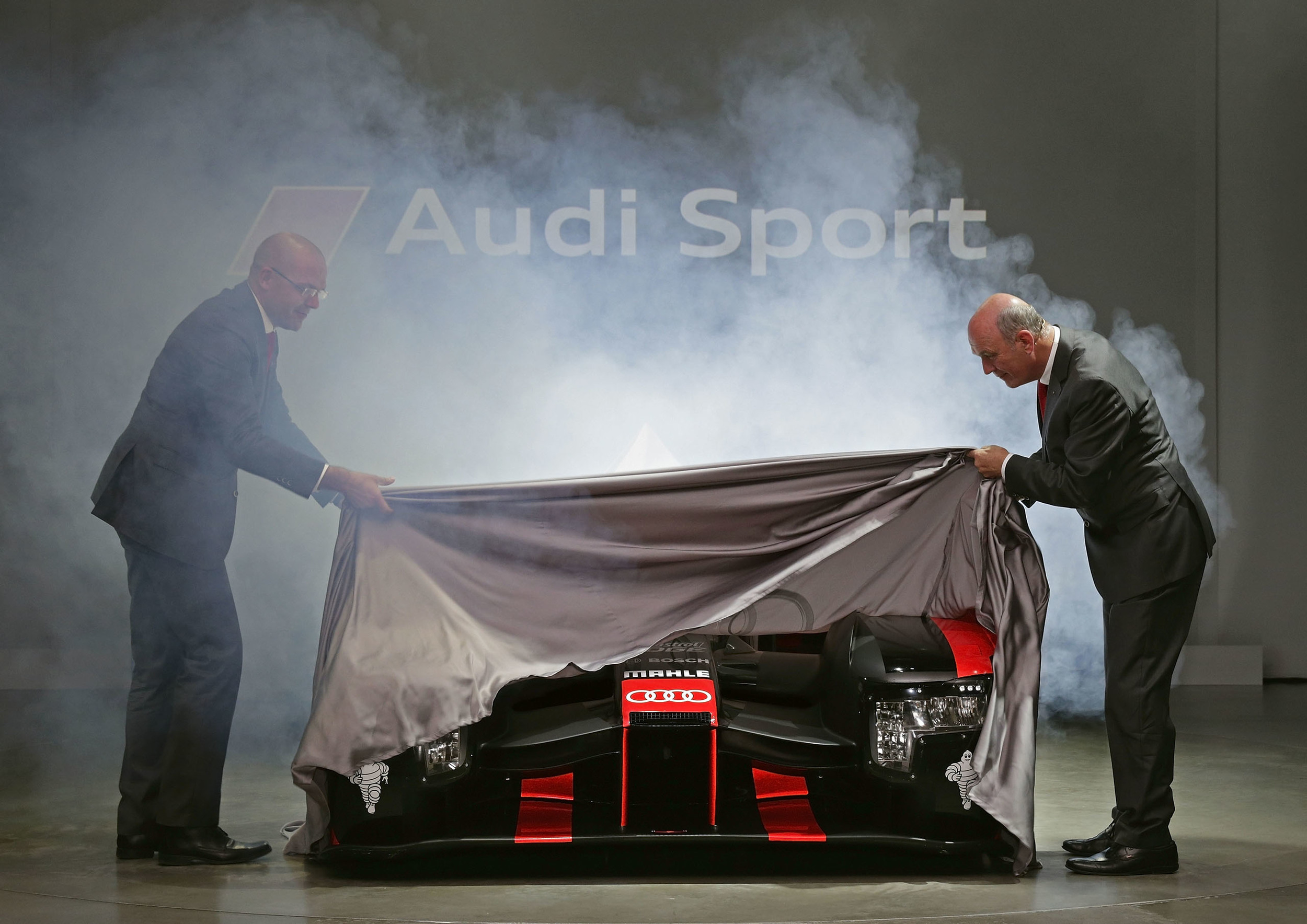
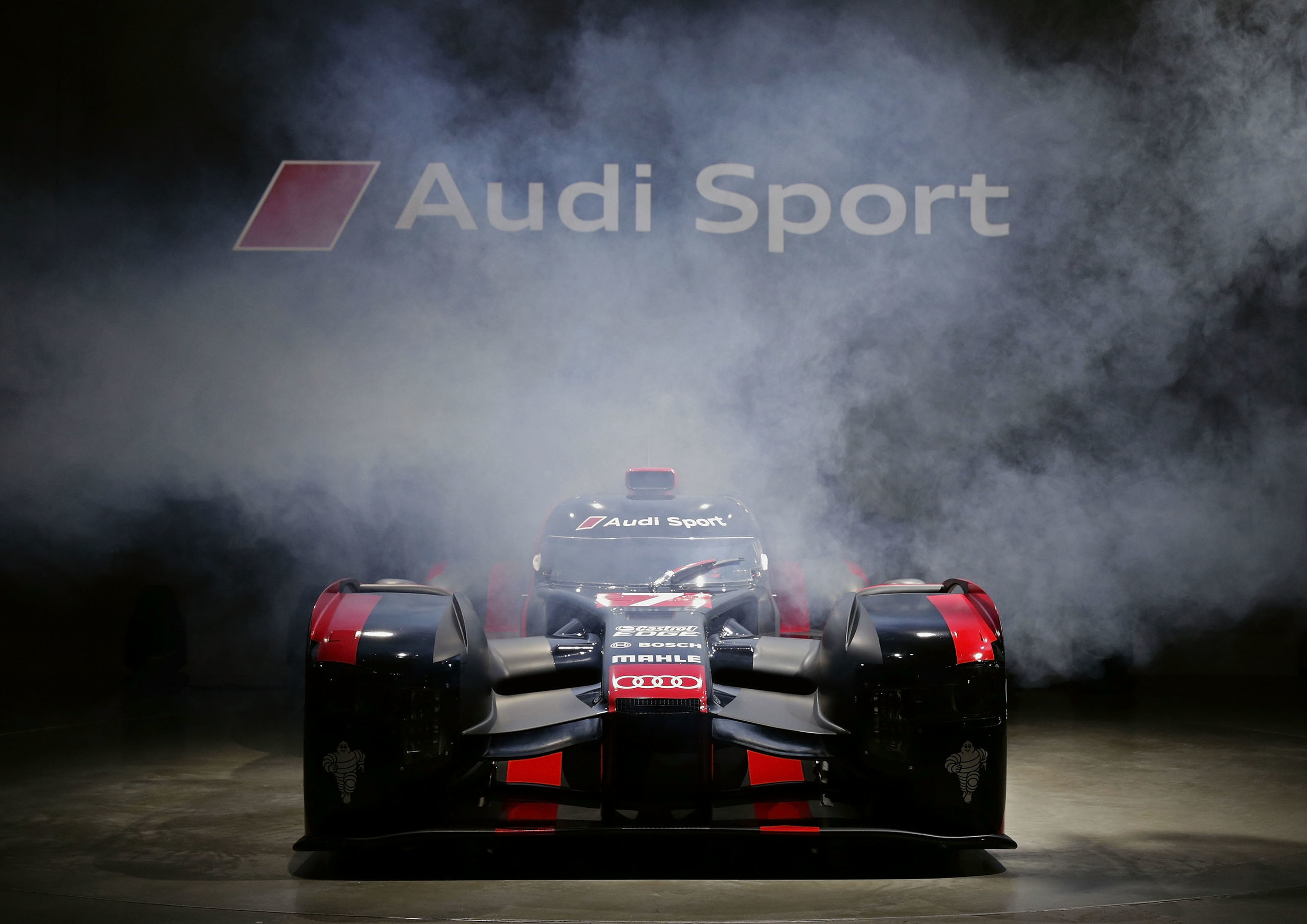
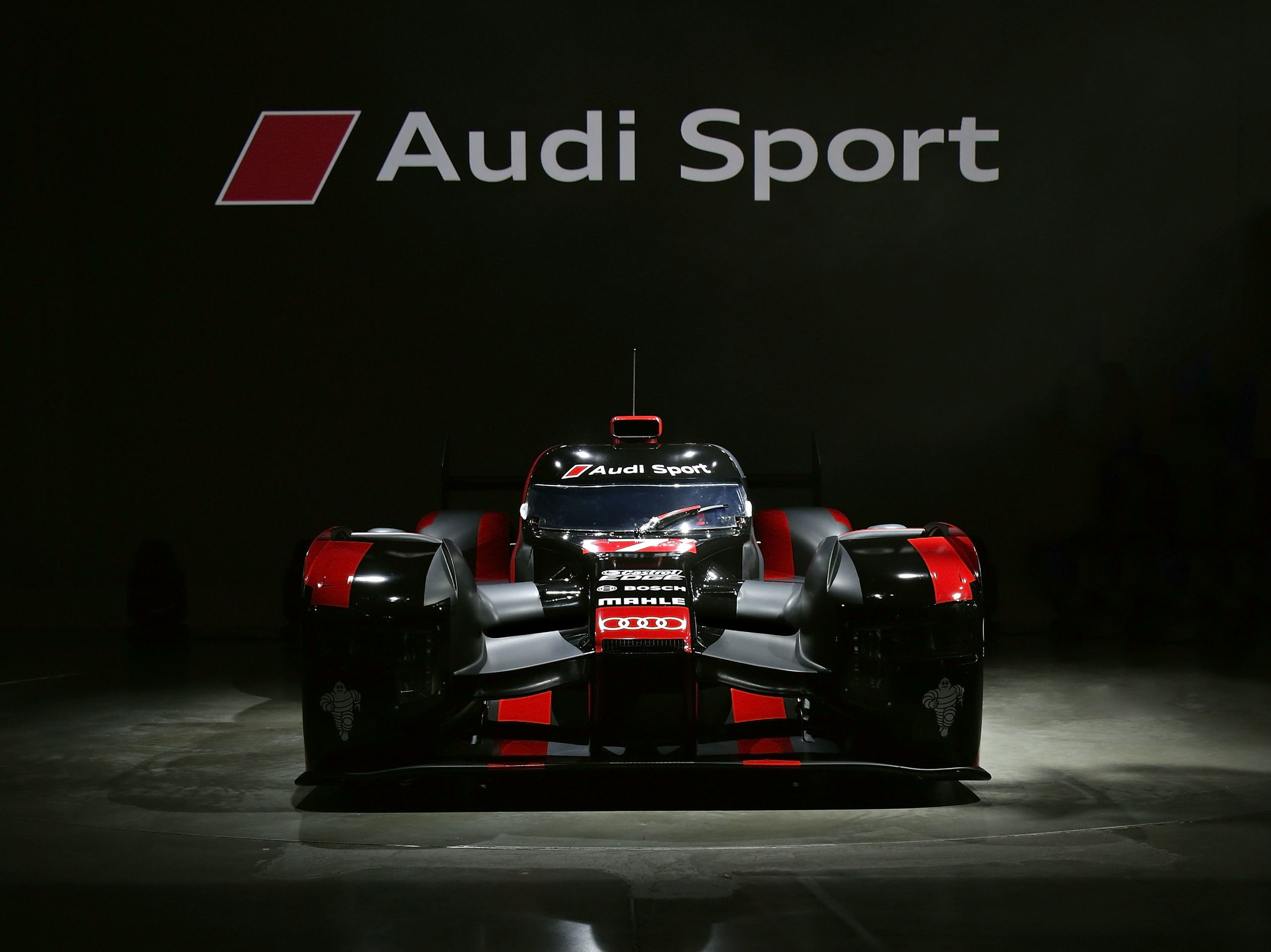
Audi has revealed its 2016 Le Mans 24 Hours car - the R18.
The most powerful and efficient race car Audi has ever built has been 'fundamentally re-designed' by Audi Sport. Featuring 'innovative aerodynamics' representing the next stage in lightweight design and a modified hybrid system with lithium-ion batteries for energy storage, there is also an efficiency-optimised TDI engine.
"With our new Audi R18, we're setting a clear signal: Audi continues to put the pedal to the metal in motorsport, deliberately relying on TDI - the world's most successful automotive efficiency technology - at Le Mans," says Head of Audi Motorsport Dr. Wolfgang Ullrich.
In the 2016 FIA World Endurance Championship (WEC) that will start at Silverstone (Great Britain) on April 17, Audi Sport Team Joest will be fielding two new Audi R18 cars. In the interest of maximum cost efficiency, Audi and its Group sister brand Porsche, have both agreed to each compete in the Le Mans 24 Hours, the WEC season's pinnacle event, with only two instead of the most recent three cars.
"We're proud about being able to again represent the Audi brand in 2016 with such an extensive commitment in motorsport," says Dr. Wolfgang Ullrich. "The new Audi R18 marks a major step that we're expecting a lot of at Le Mans and in the WEC. In the DTM, we already had the strongest car in 2015. That's what we'd like to build upon. Plus, the high demand for the new Audi R8 LMS is equally gratifying as the many young talents that are interested in the Audi Sport TT Cup."
Audi 'prints' replica historical car
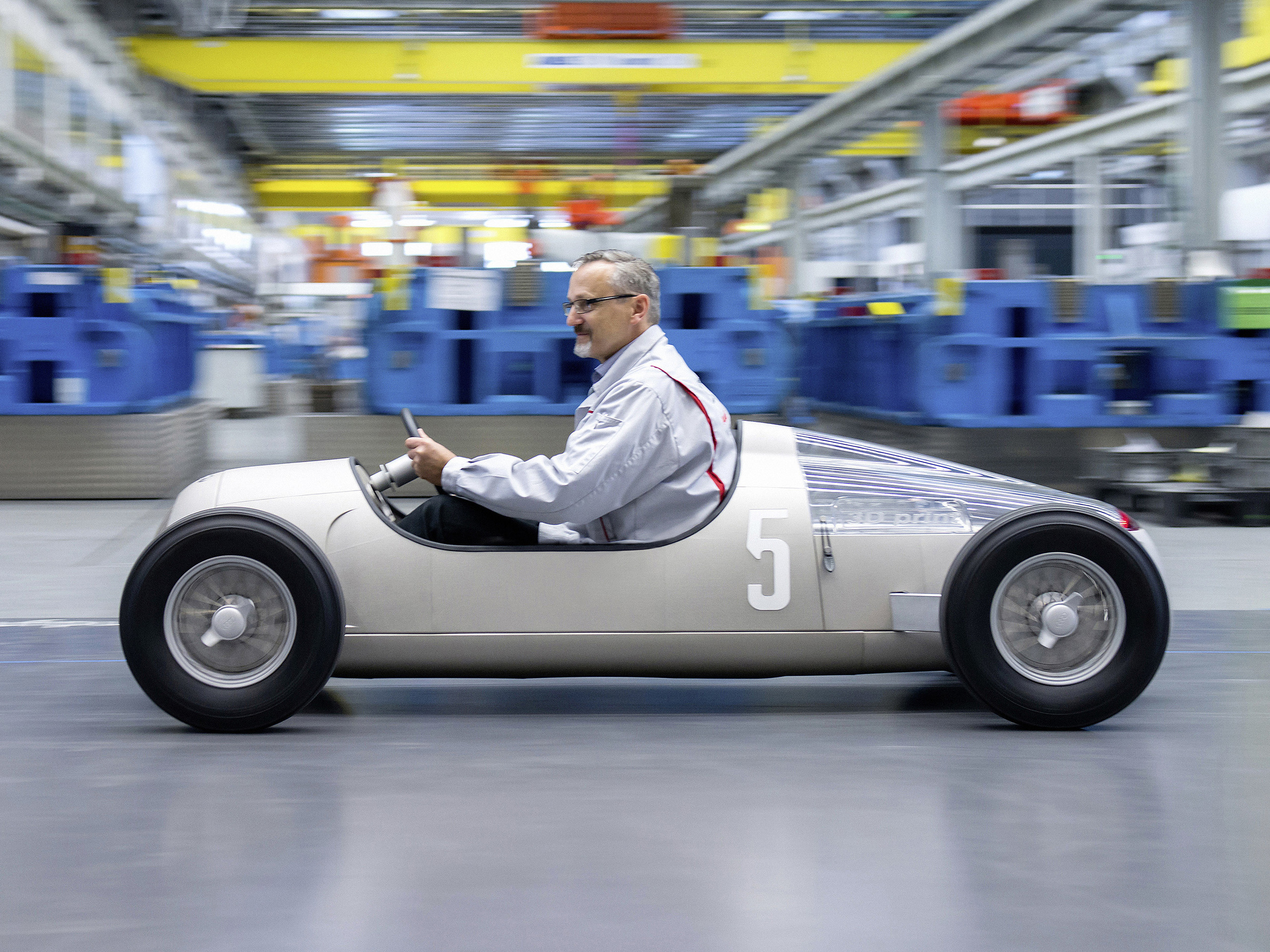
Audi Toolmaking has used a 3D printer to produce a model of the historical 1936 "Auto Union Typ C" Grand Prix car.
The company is now examining further possible applications of metal printers for the production of complex components. "We are pushing forward with new manufacturing technologies at Audi Toolmaking and at the Volkswagen Group," stated Prof. Dr. Hubert Waltl, Audi's Board of Management Member for Production and Head of Toolmaking at the Volkswagen Group. "Together with partners in the area of research, we are constantly exploring the boundaries of new processes. One of our goals is to apply metal printers in series production."
The Volkswagen Group has a total of 14 toolmaking units in nine countries with cooperative ventures arranged for research and development. The first focus of the cooperation is the implementation of metallic 3D printing and 3D printing in the sand-printing method. Audi Toolmaking has now used metal printing to produce all the metallic parts of the Silver Arrow model "Auto Union Typ C" on a scale of 1:2.
For this purpose, a 'selective-sintering' laser melted layers of metallic powder with a grain size of 15 to 40 thousandths of a millimetre, roughly half of the diameter of a human hair. The process therefore allows the production of components with complex geometries, which with conventional methods could either not be produced or only with great difficulties. At present, this process can be used to produce shapes and objects with a length of 240 millimetres and a height of up to 200 millimeters. These printed components achieved a higher density than components made by die casting or hot forming.
Audi unveils new RS 6 and RS 7 performance variants

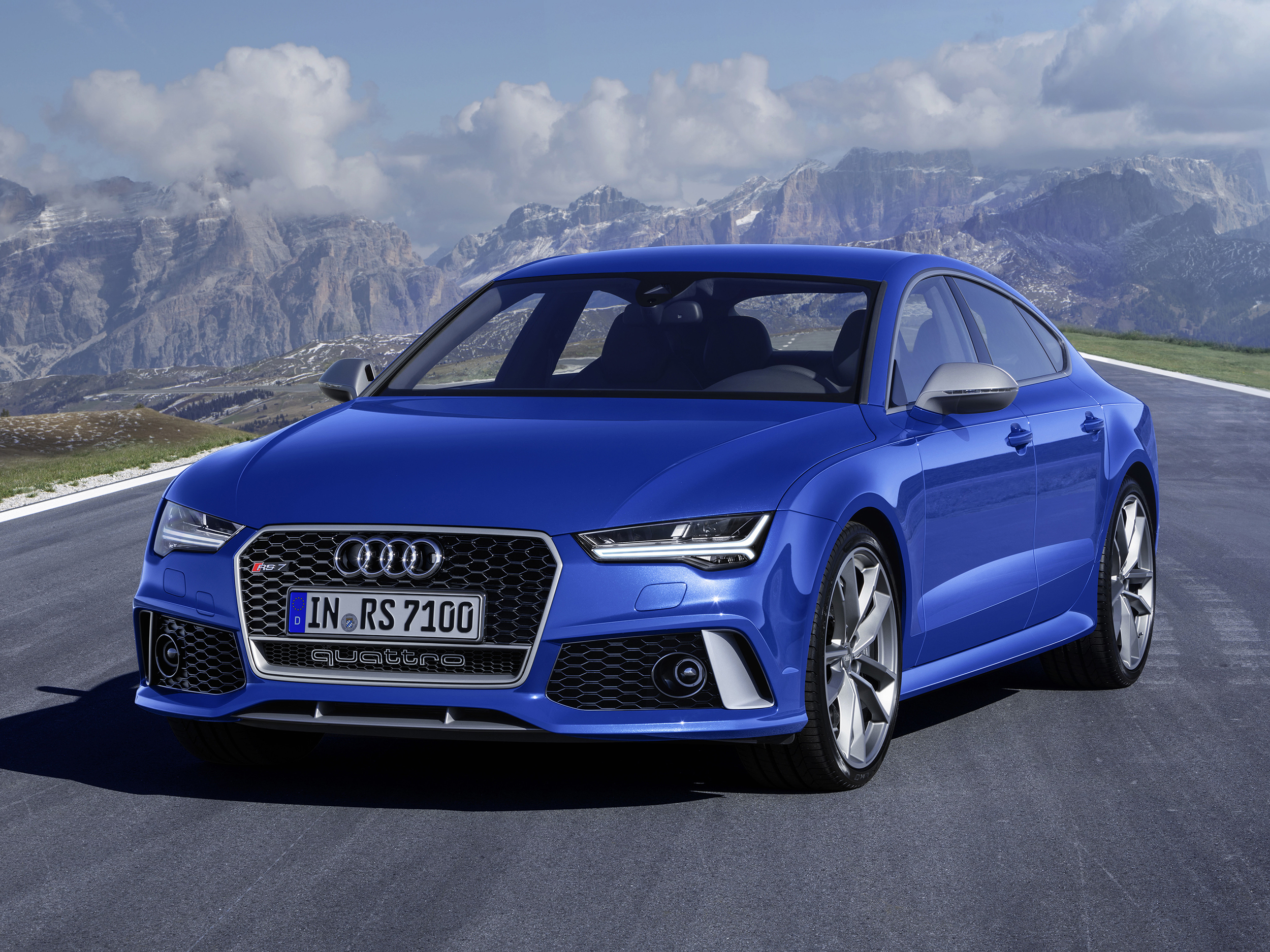
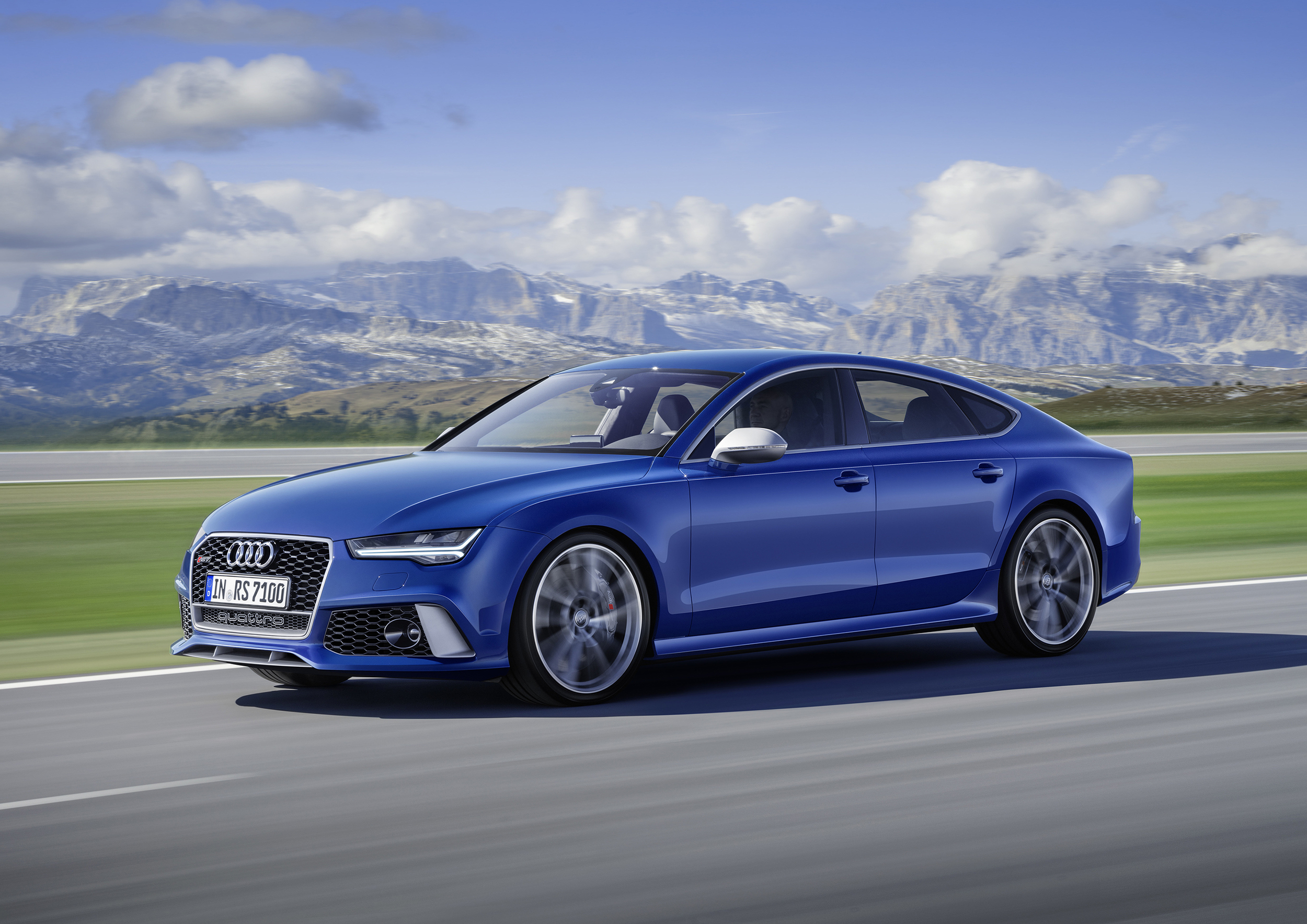
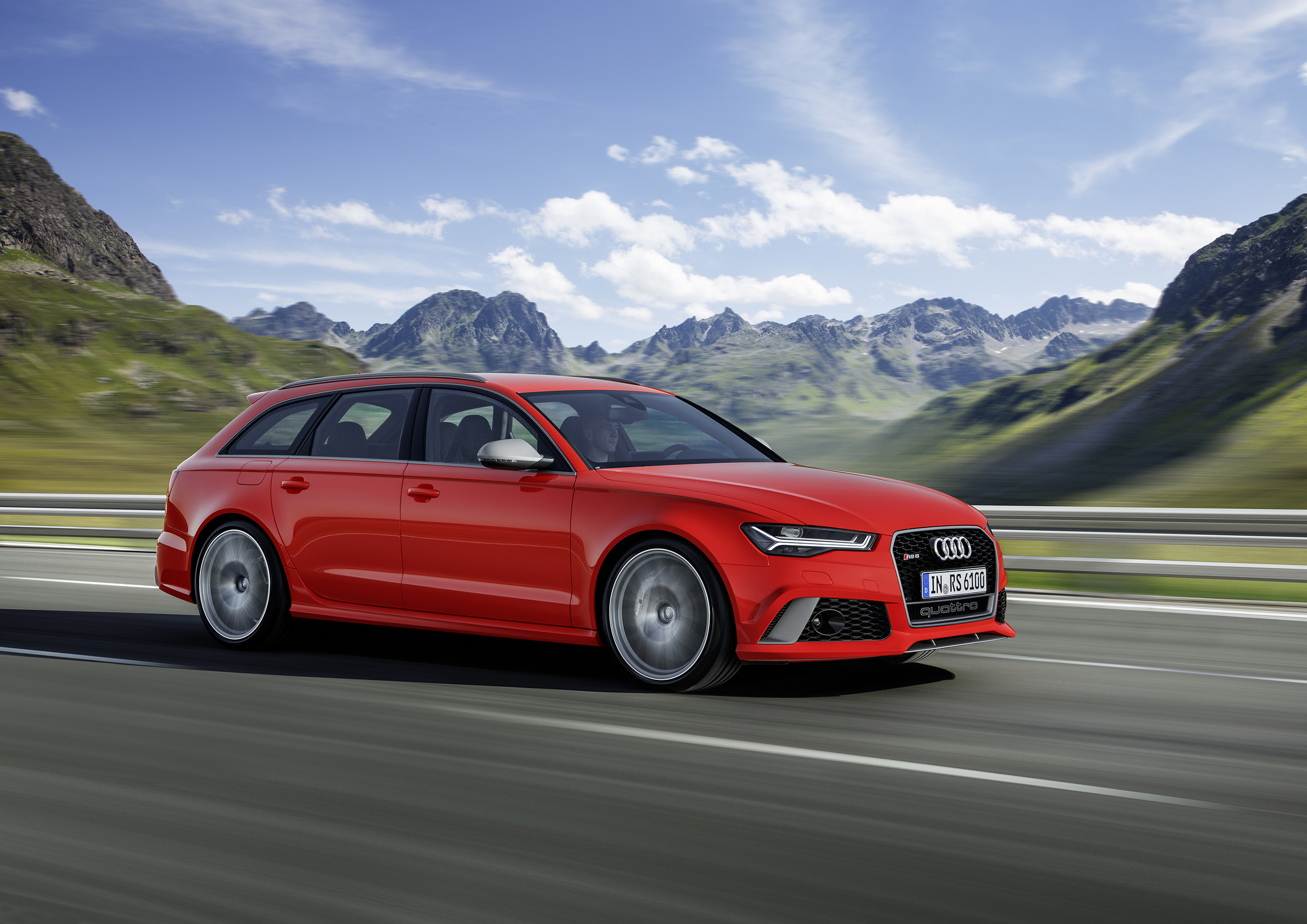
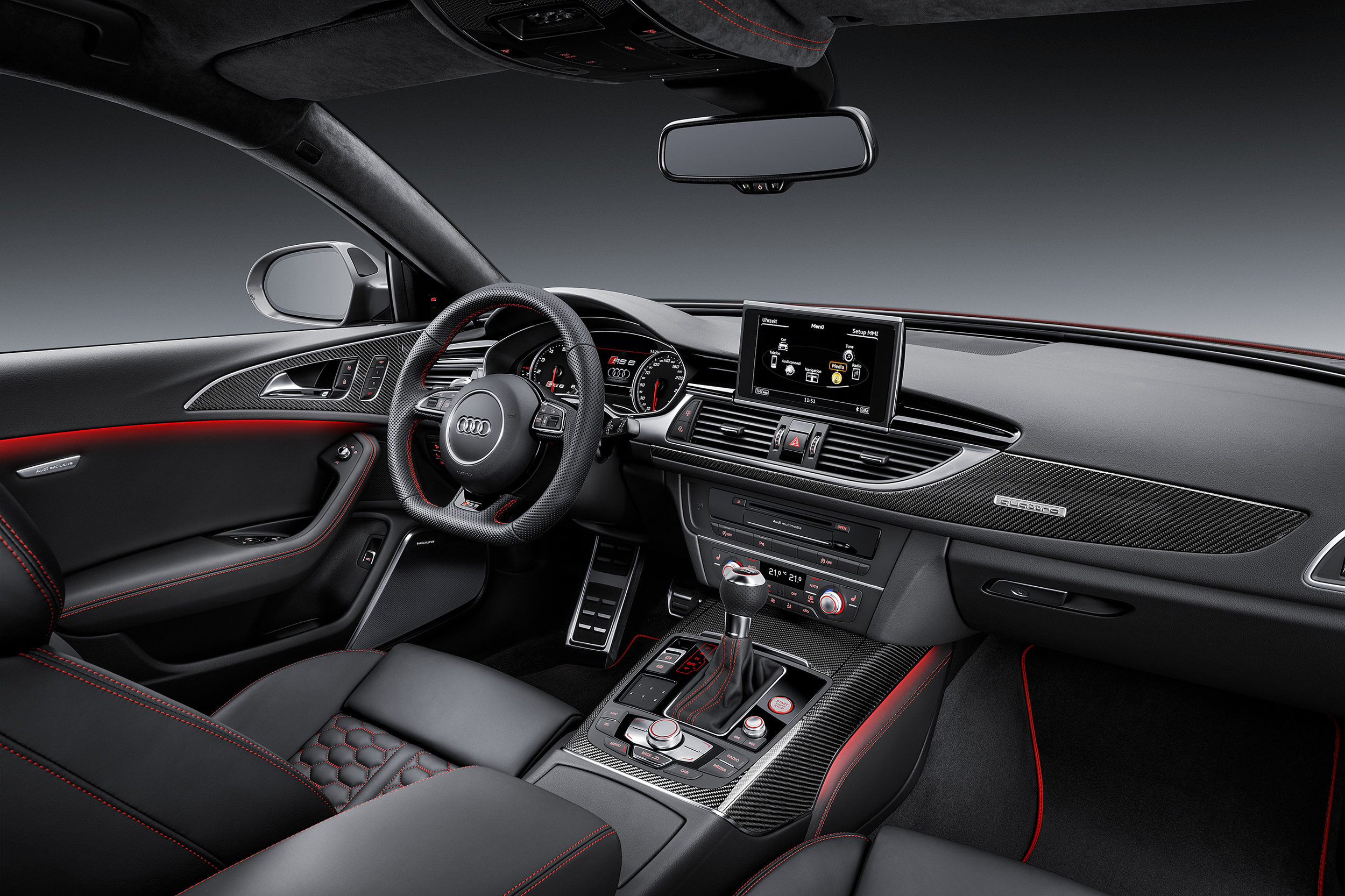
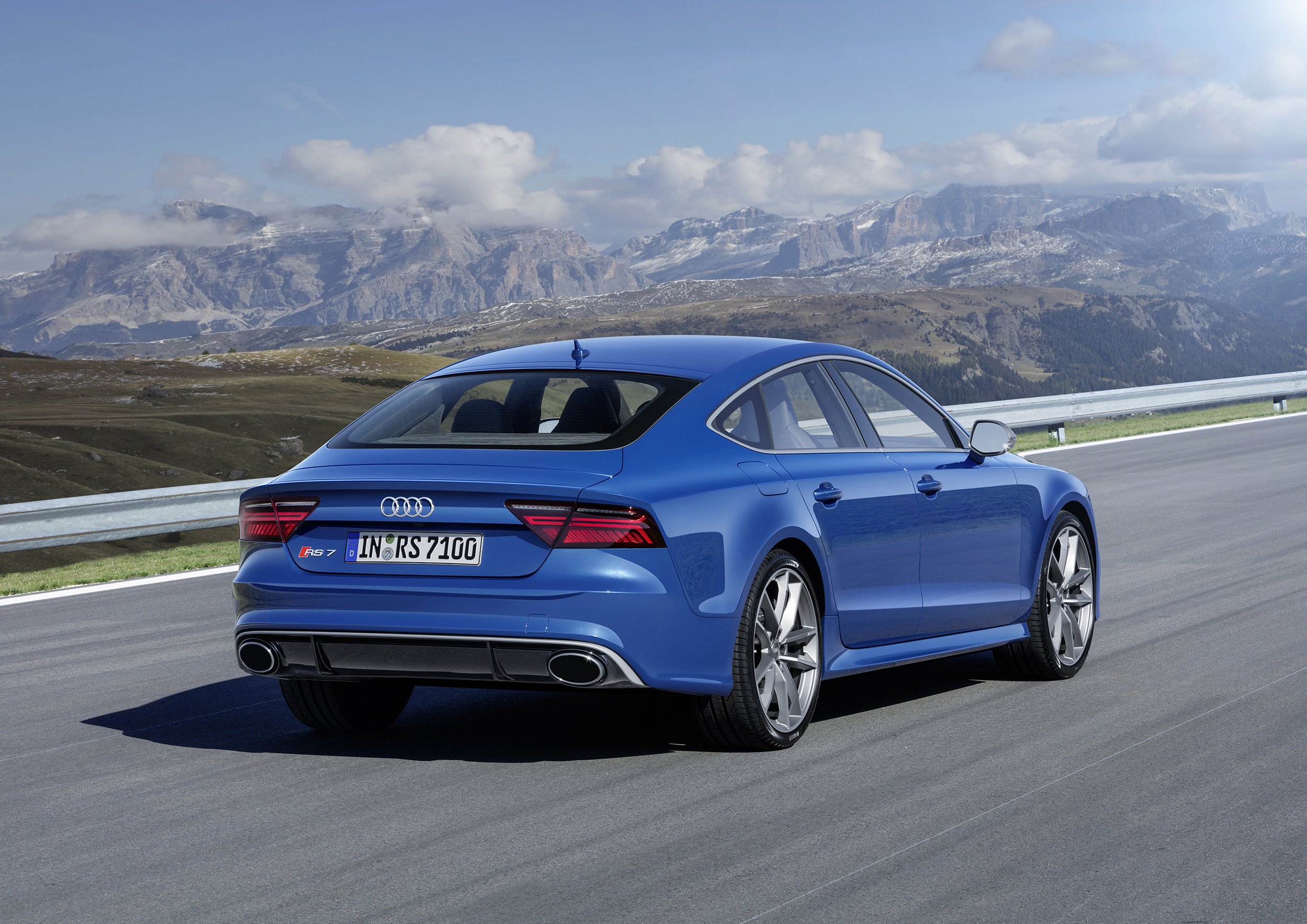
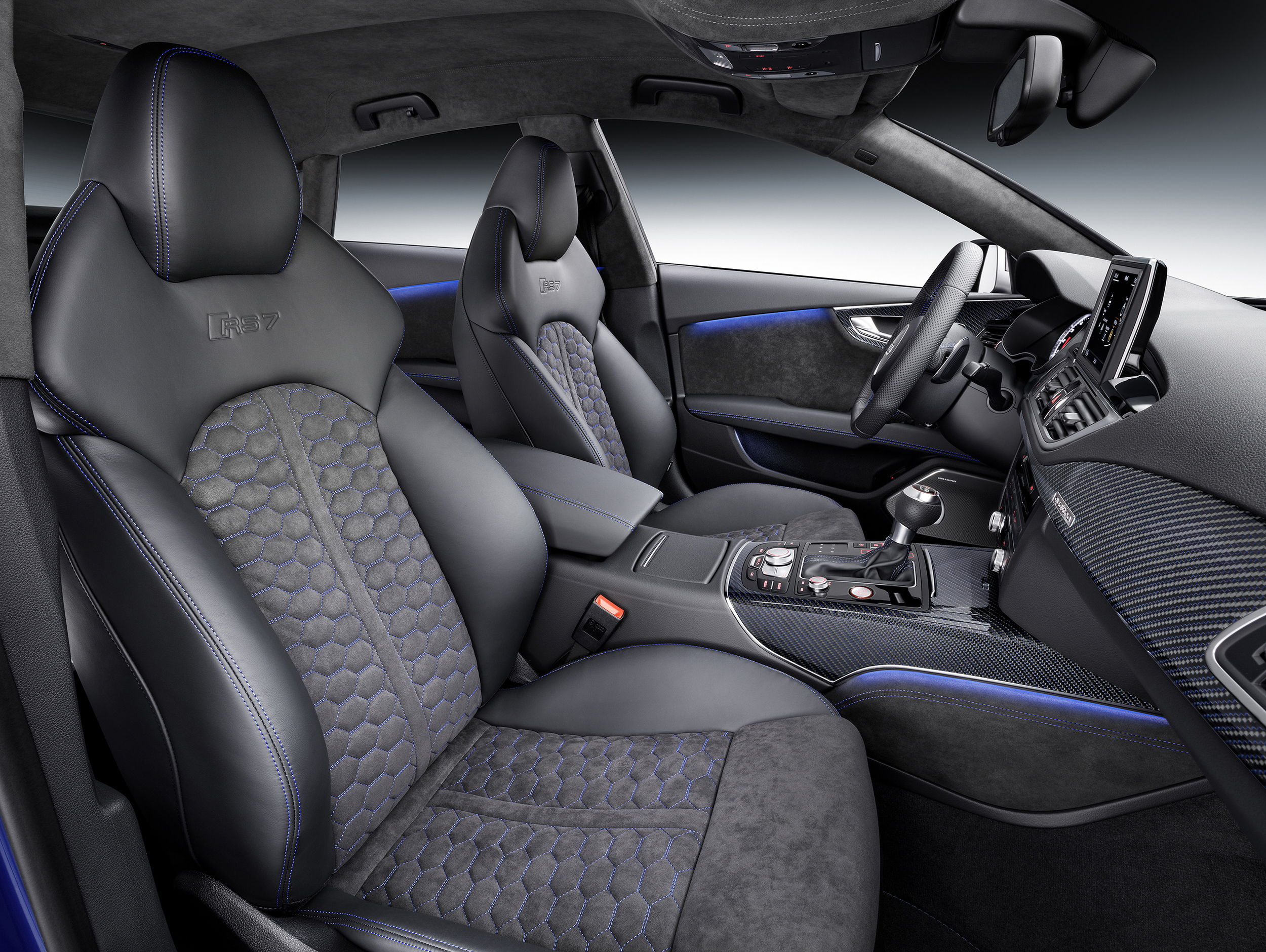
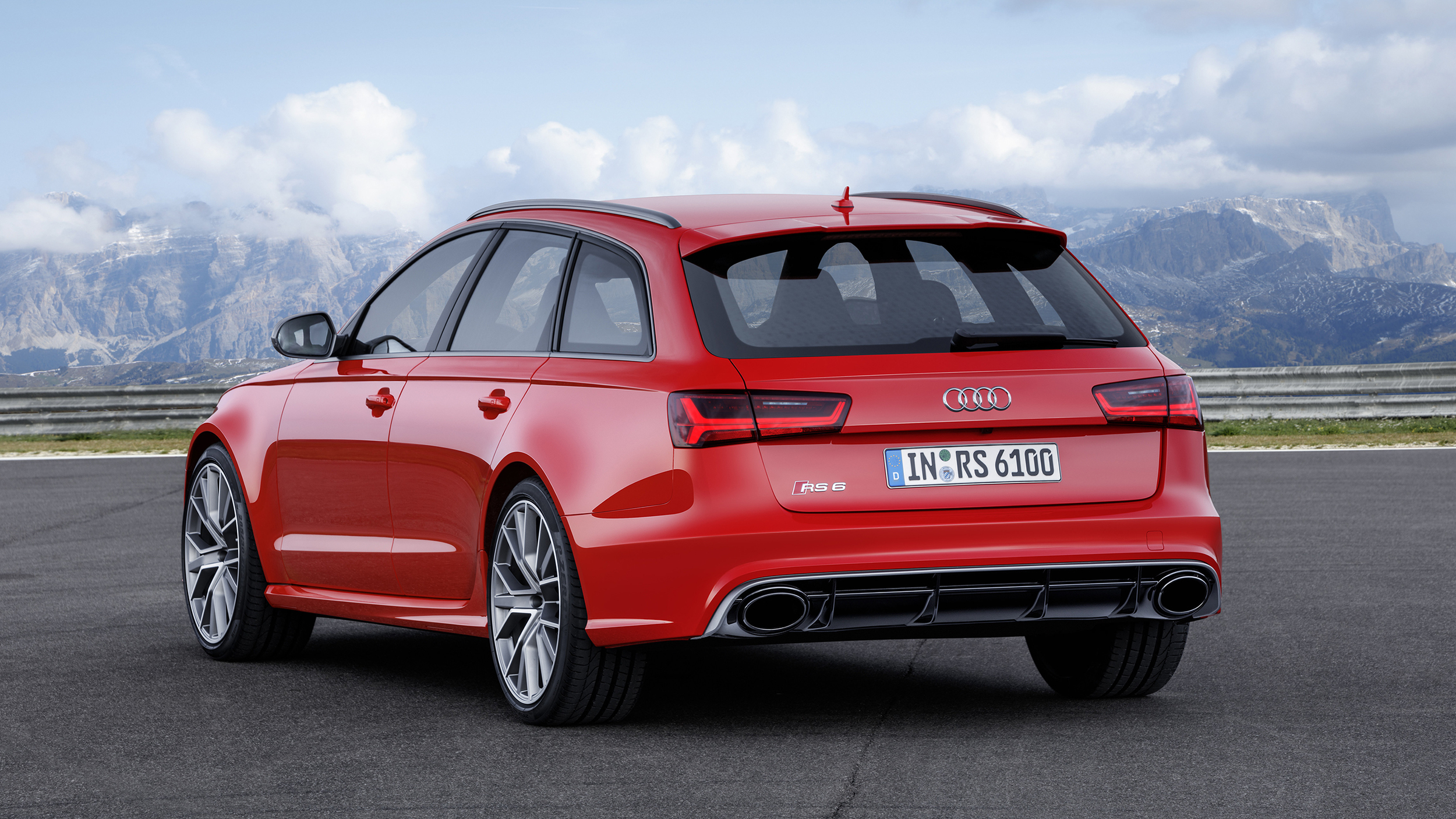
Audi has confirmed new RS 6 Avant and RS 7 Sportback 'performance' models have joined its range.
Adding more power, up power to 605PS and torque to up to 750Nm over their already formidable counterparts the new RS performance models retain the same 'best-in-class' fuel economy and efficiency figures as their 'standard' equivalents.
That's despite translating their 45PS and 50Nm output advantages into what Audi calls a supercar-challenging sprint time to 62mph of just 3.7 seconds, and on to a top speed of 189mph if the dynamic package plus is specified.
Available to order in the UK from November, and scheduled for first deliveries next February, the RS 6 Avant performance will be priced at £86,000 OTR and the RS 7 Sportback performance at £91,600 OTR.
The 4.0-litre TFSI engine's 605PS output and 700Nm of peak torque can be temporarily increased by the driver to 750Nm by way of an overboost function. The standard eight-speed tiptronic transmission has been designed to 'maximise the potential' of the more extreme engine in both the new RS 6 Avant performance and the new RS 7 Sportback performance. The driver can choose between the modes D and S or change gears manually either by tapping the selector lever or by using the shift paddles on the RS multifunction sport leather steering wheel. In manual mode, a shift indicator in the driver information system or optional head-up display indicates the rev limit.
The quattro permanent all-wheel drive system delivers the power to the road and flexibly distributes torque as needed via the centre differential. With its dynamic set-up, the standard RS adaptive air suspension lowers the body of the RS 6 Avant performance and RS 7 Sportback performance by 20 millimetres. The driver can modulate the function of key components using Audi drive select, including the steering, engine and sound management, the tiptronic transmission and the sport differential. The RS performance models, like the all-new R8 sports car, make the Audi drive select configuration process even quicker and easier by enabling the driver to switch between the auto, comfort, dynamic and individual modes without taking eyes off the road using a button on the RS multifunction sport leather steering wheel.
Both RS performance models run on 21-inch cast aluminium wheels with 285/30 tyres in the RS 6 Avant performance and 275/30 tyres in the RS 7 Sportback performance. The four internally ventilated brake discs have a weight-saving wave design, and can be replaced by carbon fibre-ceramic discs as an option.
RS performance features include accentuated bumpers with large air inlets up front and the heavily profiled diffuser insert at the rear, as well as the gloss black honeycomb grille typical of the RS models and the flared side sills. RS super sports seats with pronounced side bolsters and integrated head restraints are standard, and are upholstered in a black and blue Alcantara and leather combination with a honeycomb pattern and matching stitching on the armrests.
